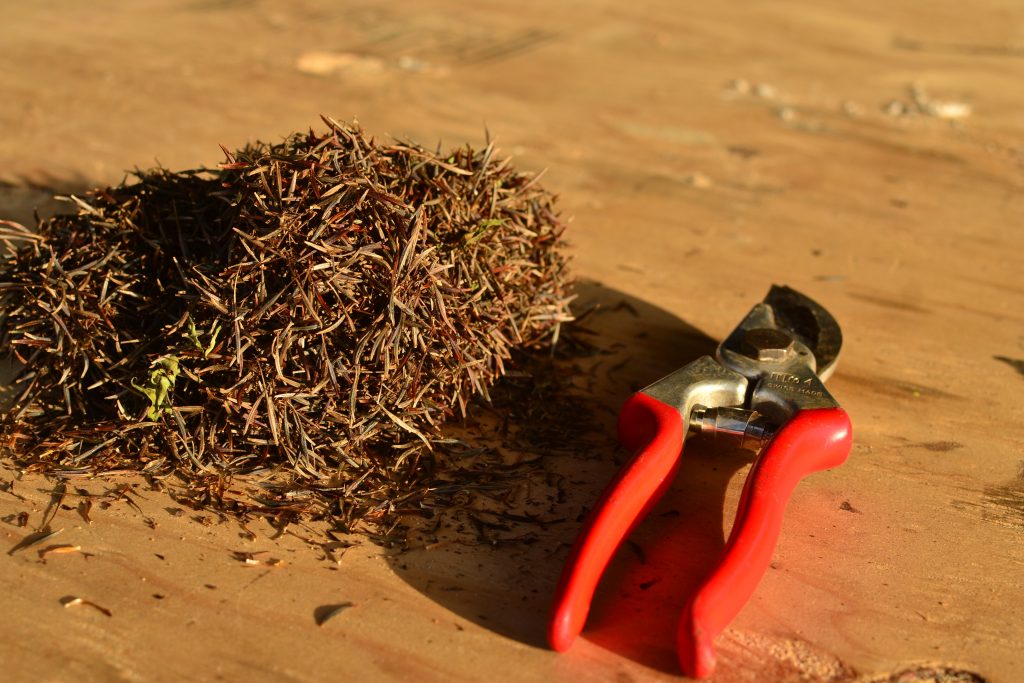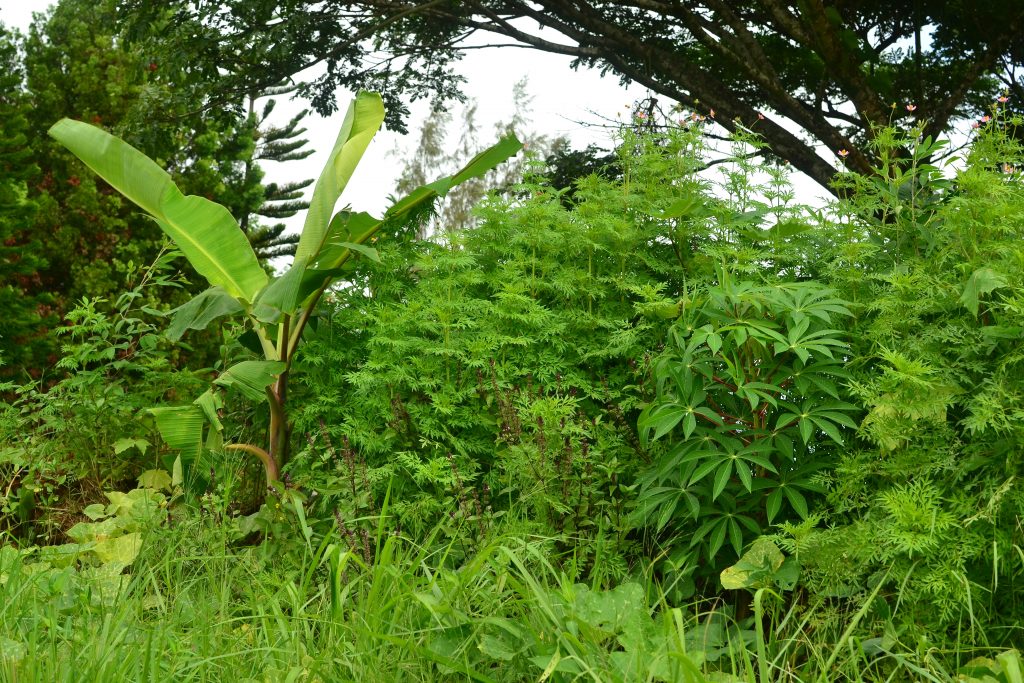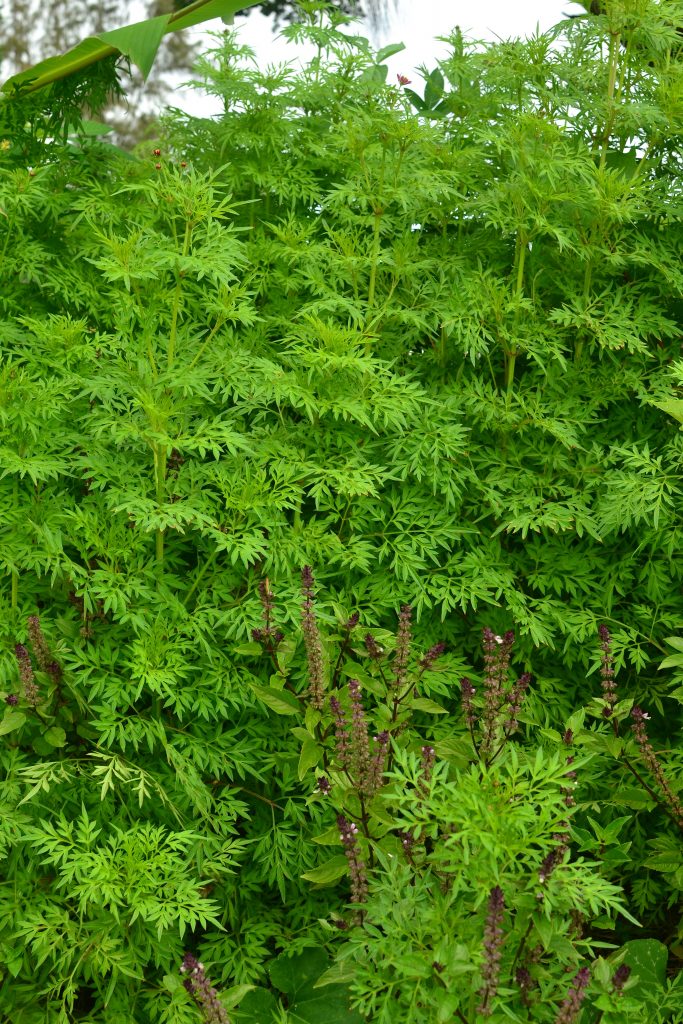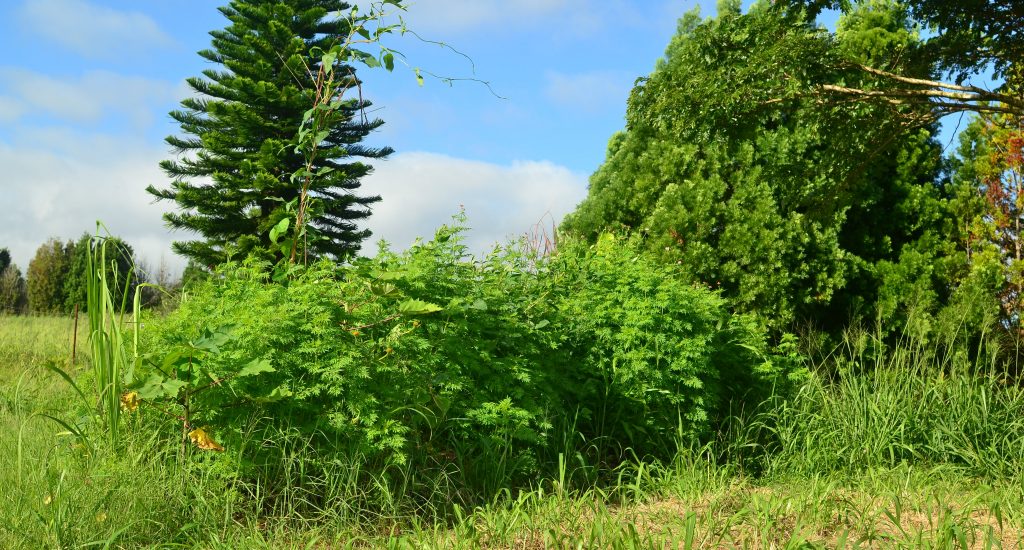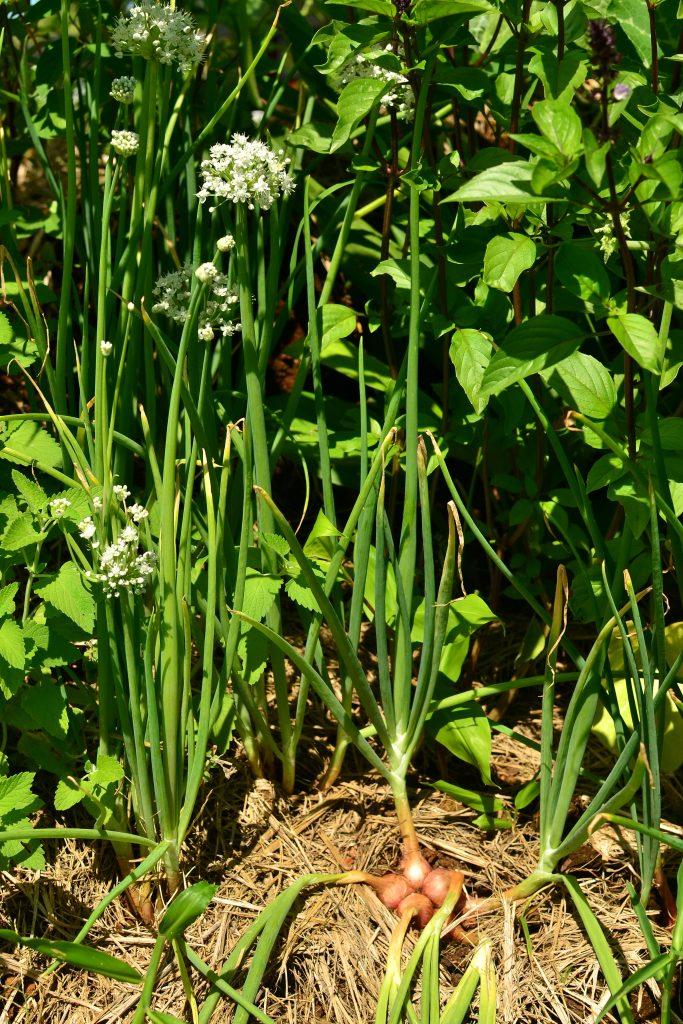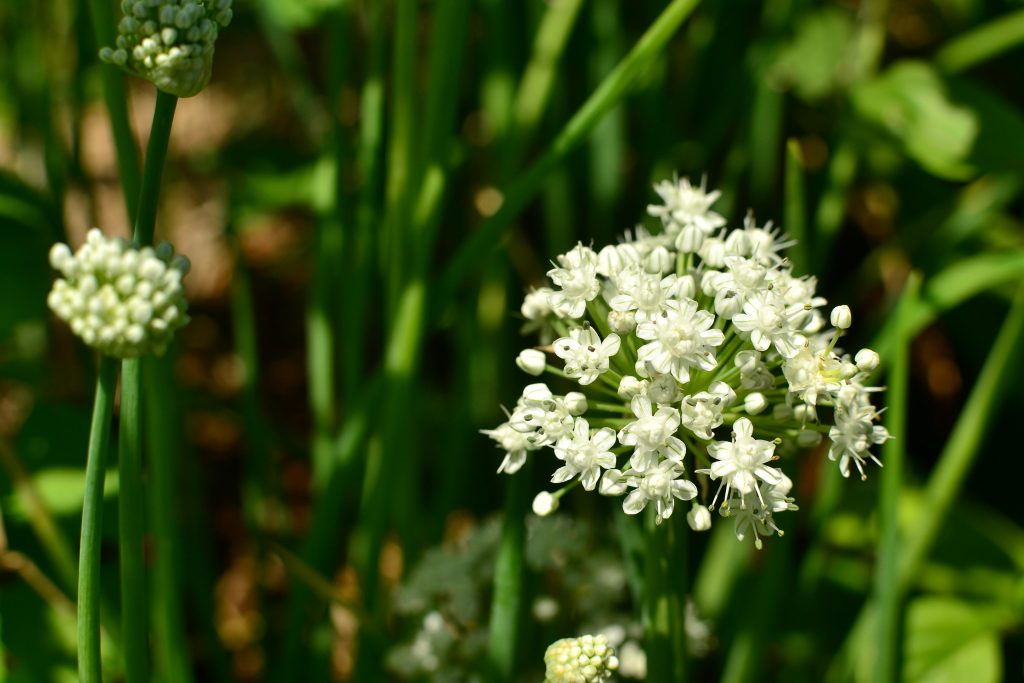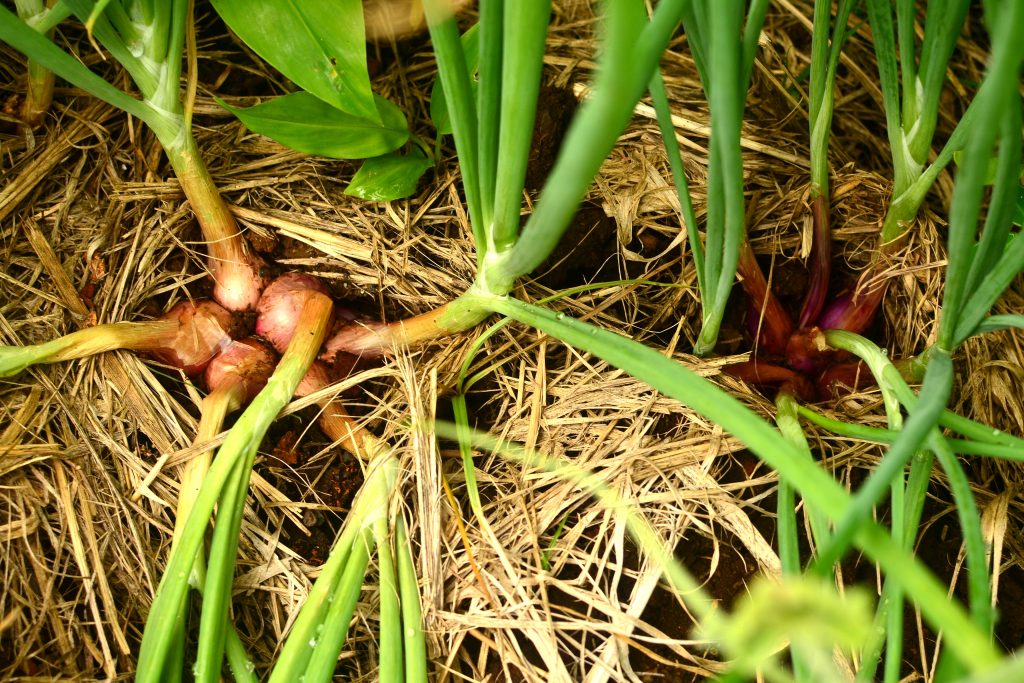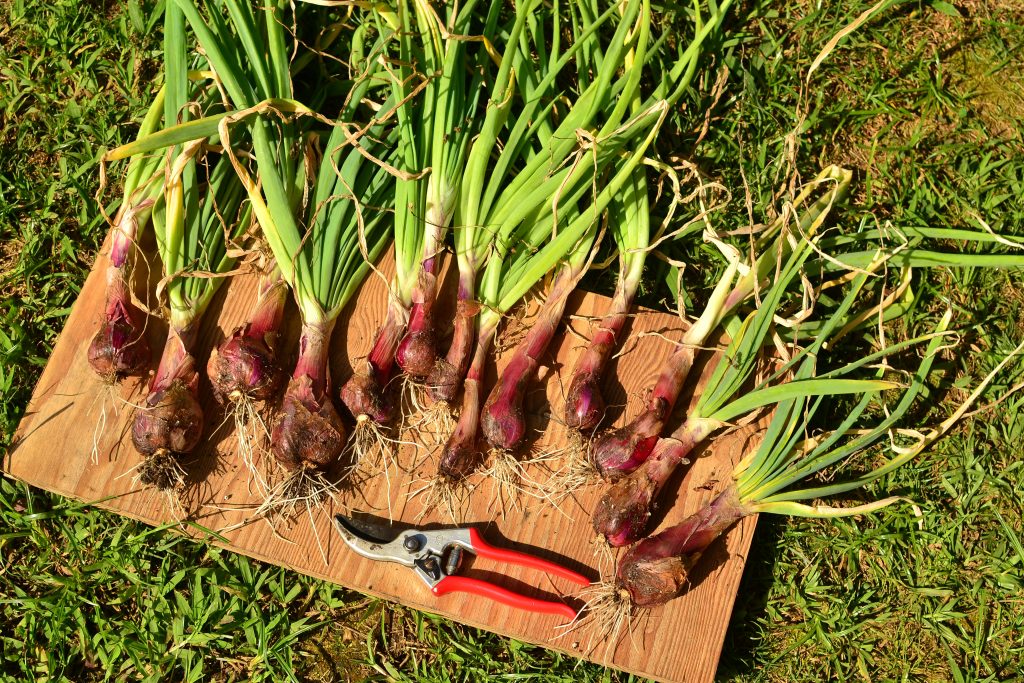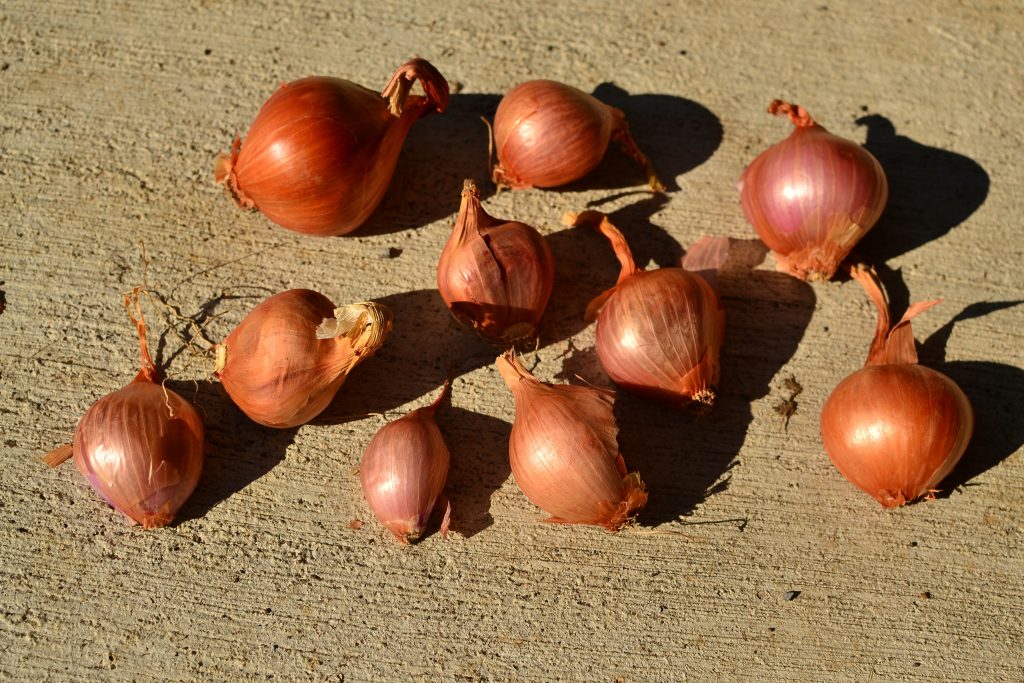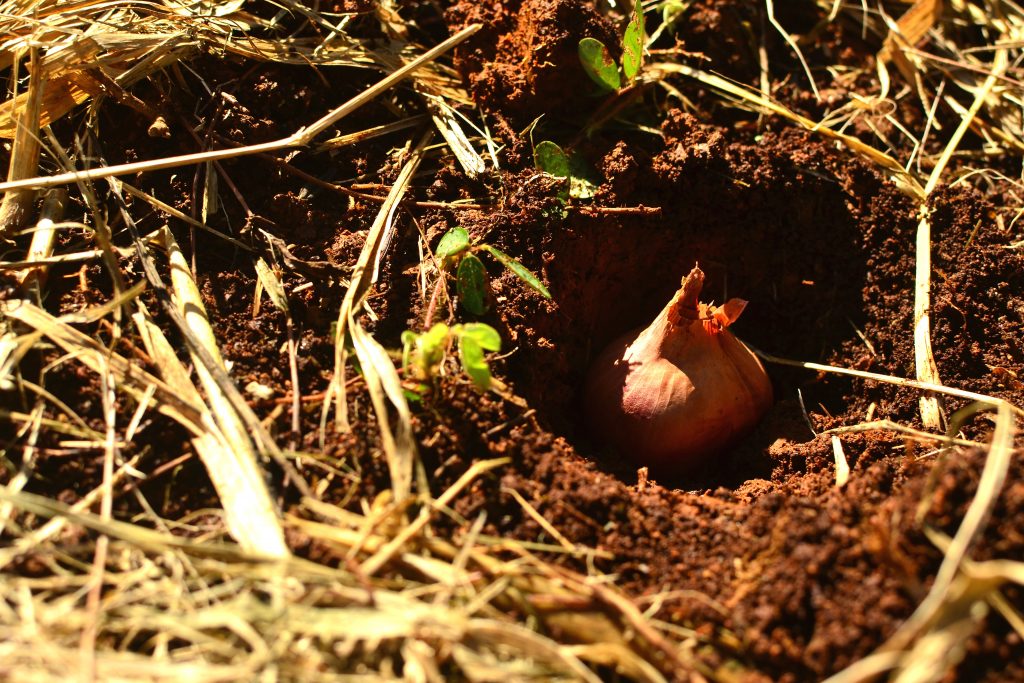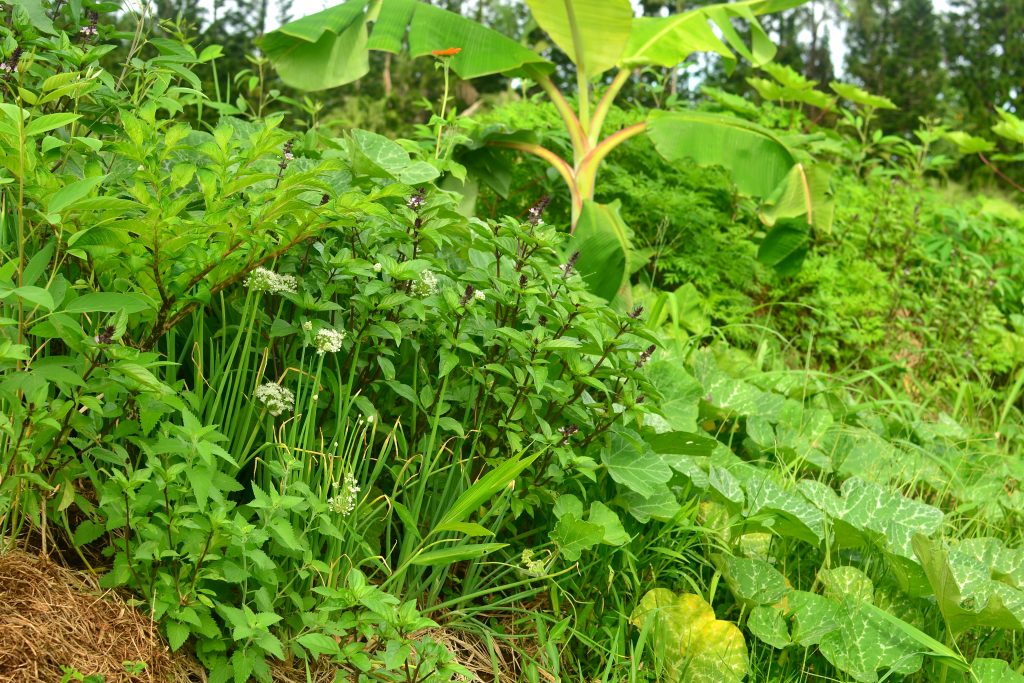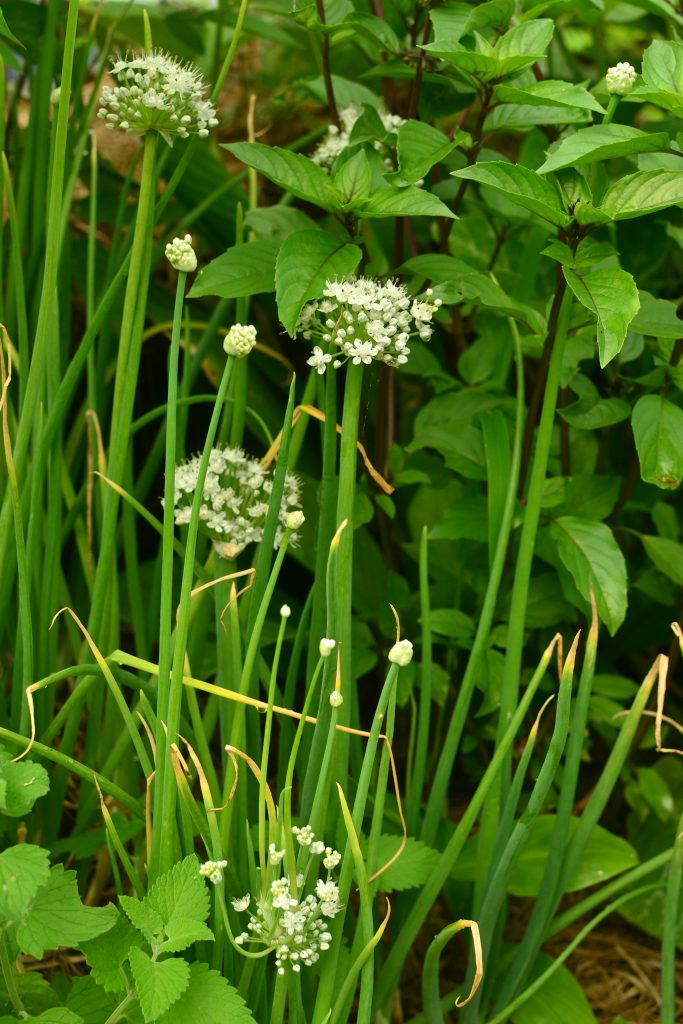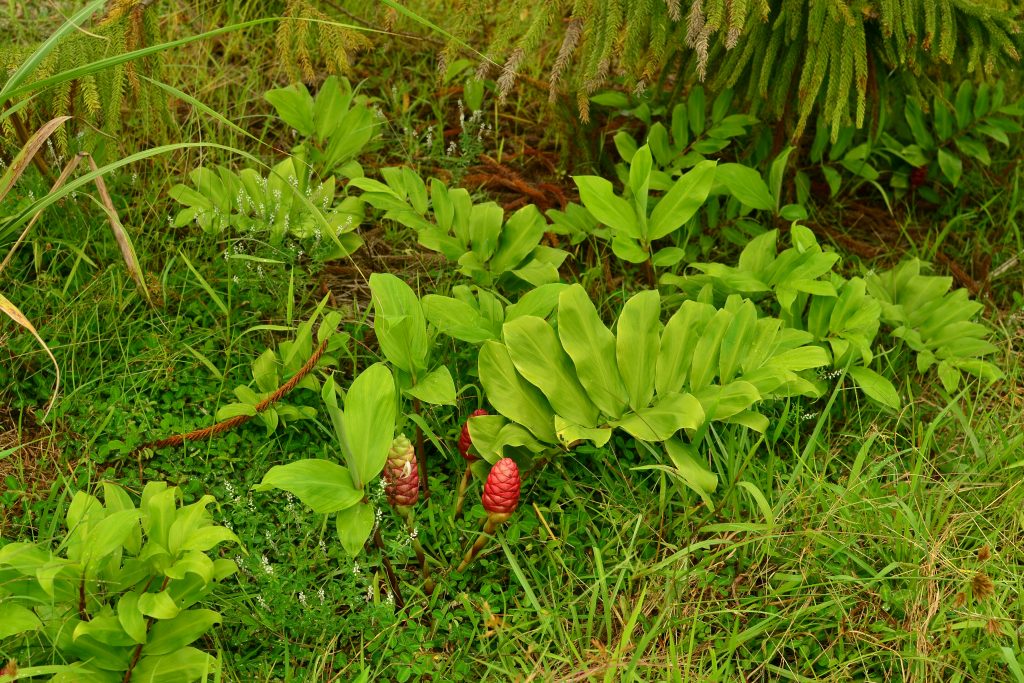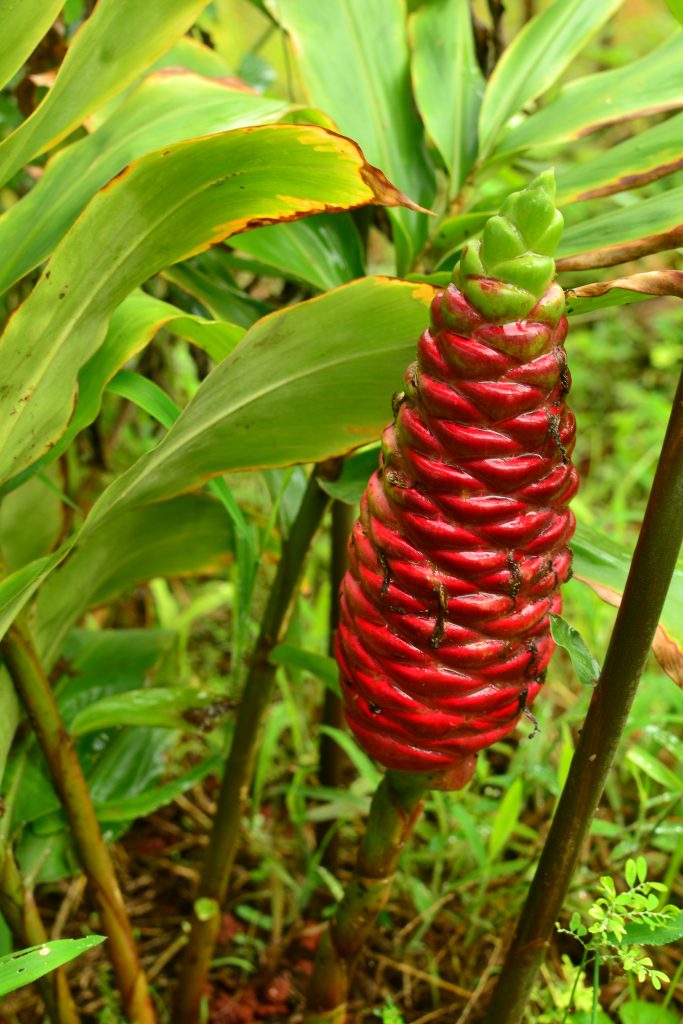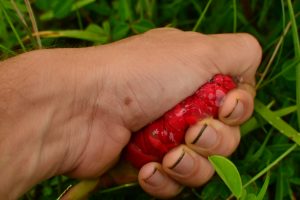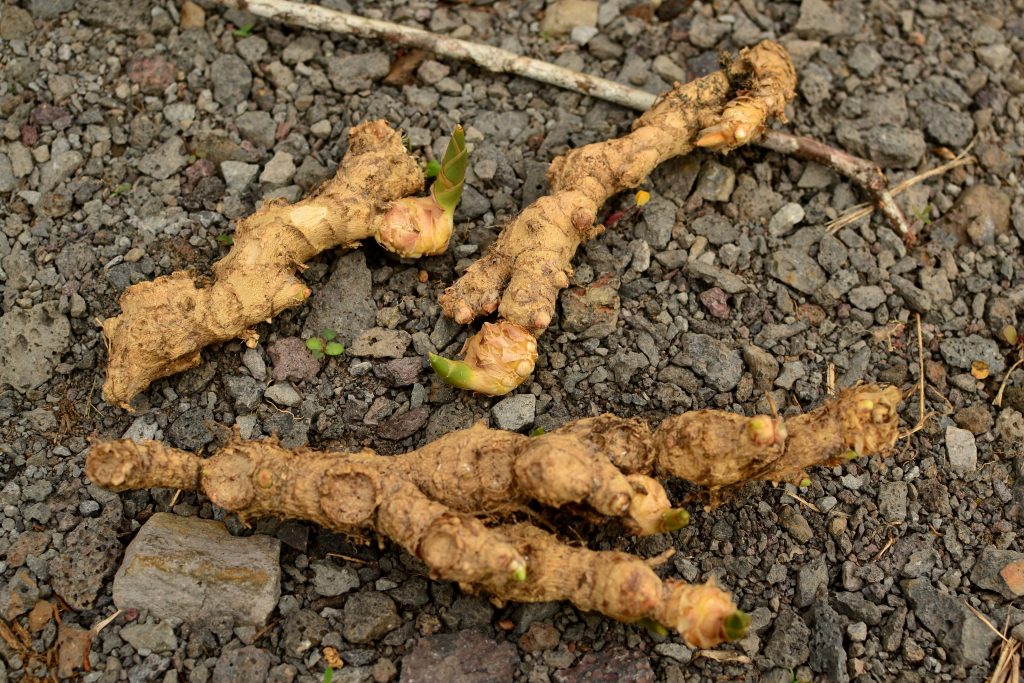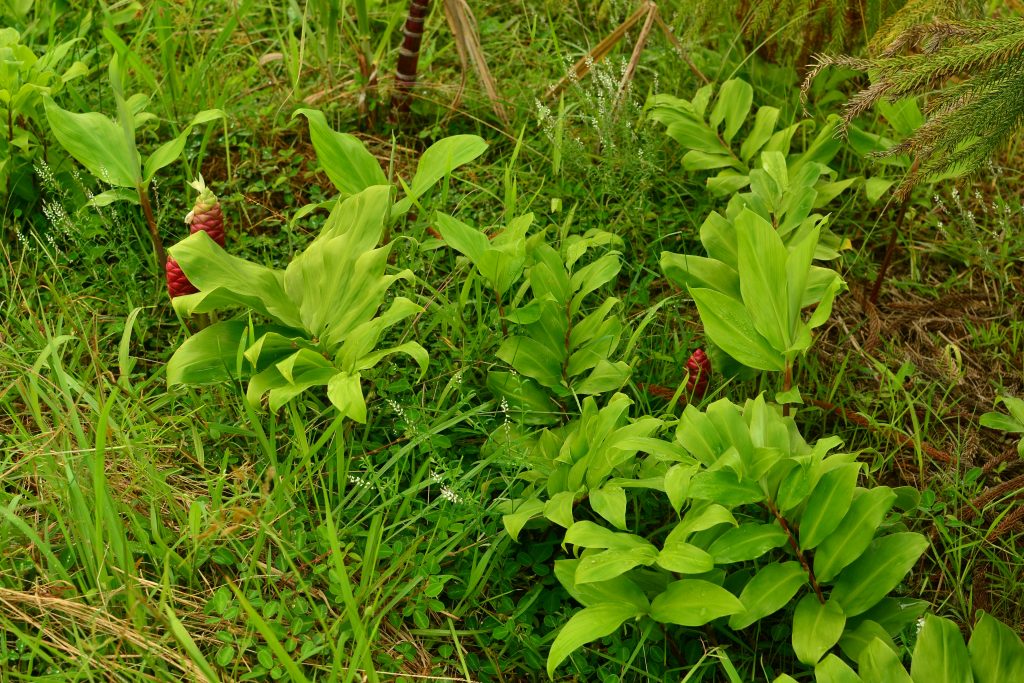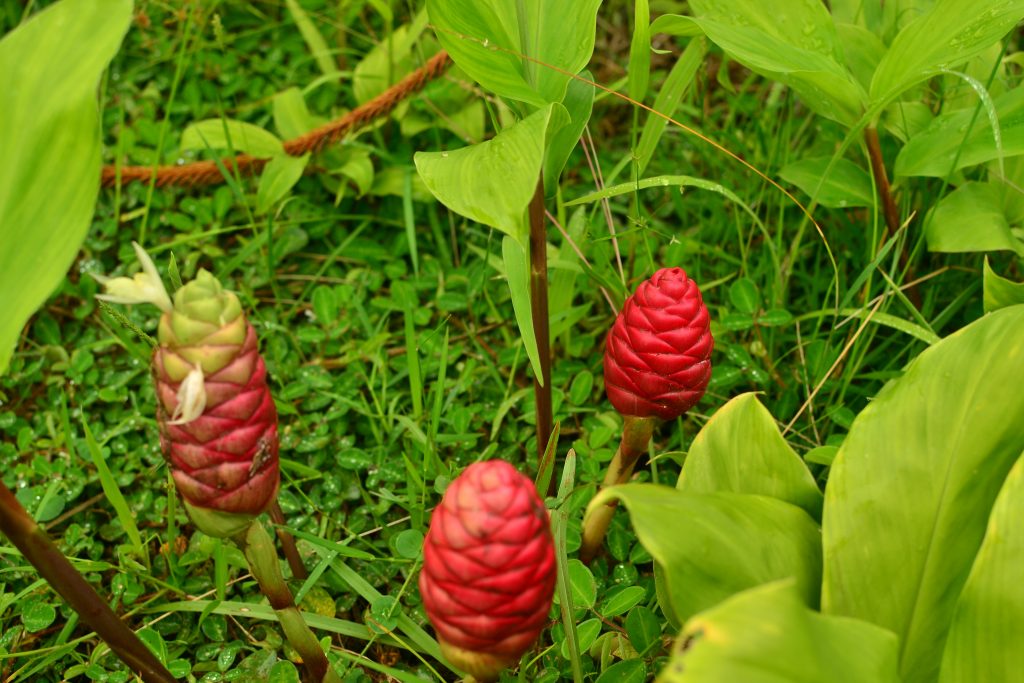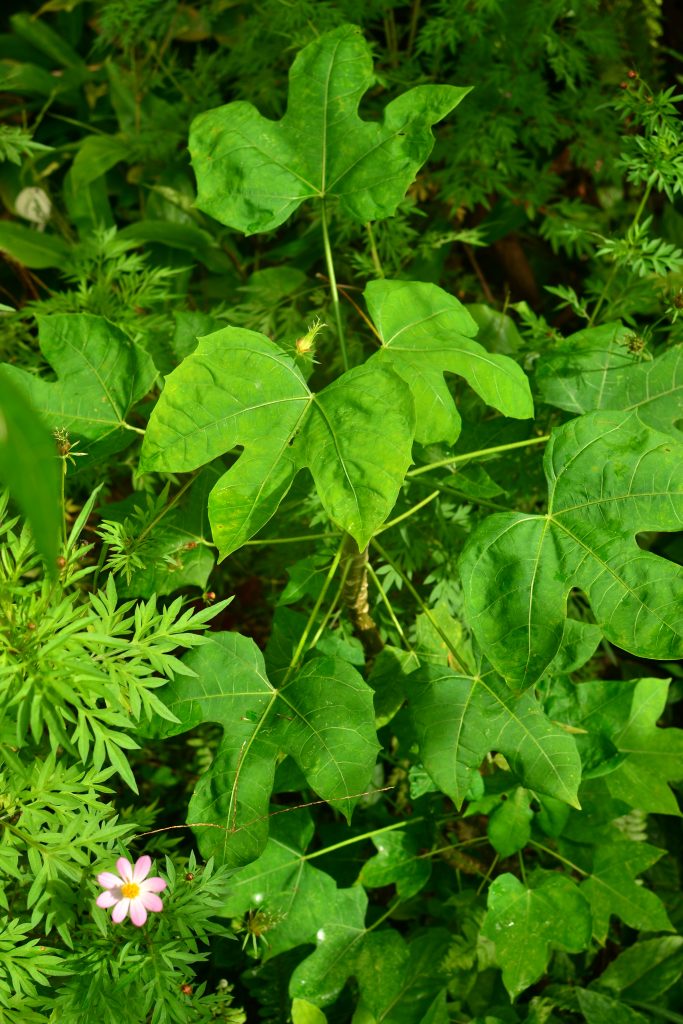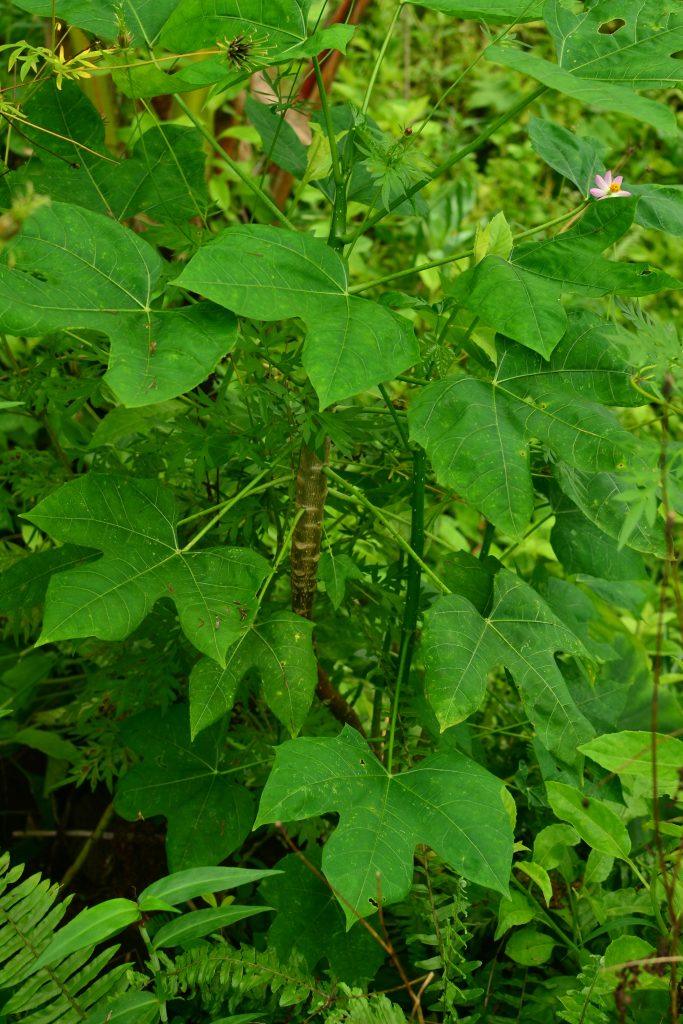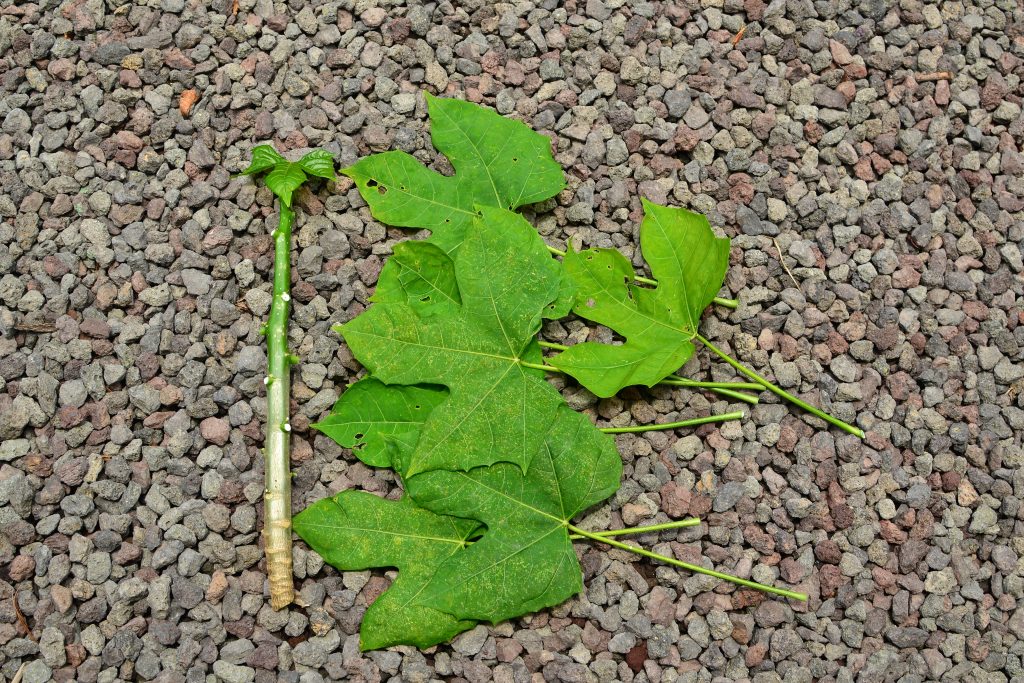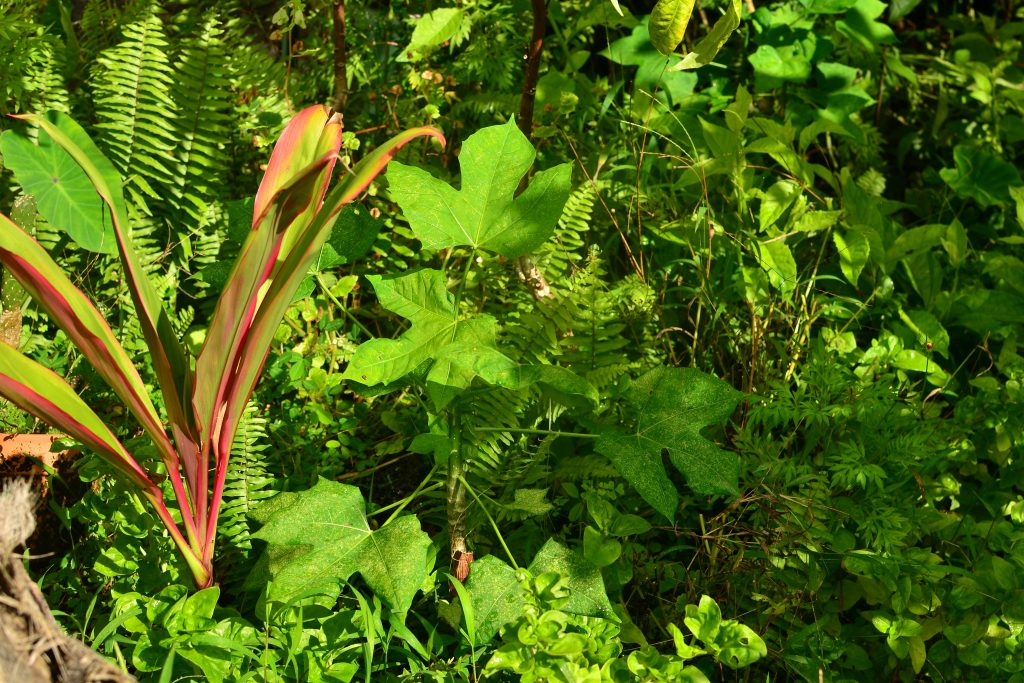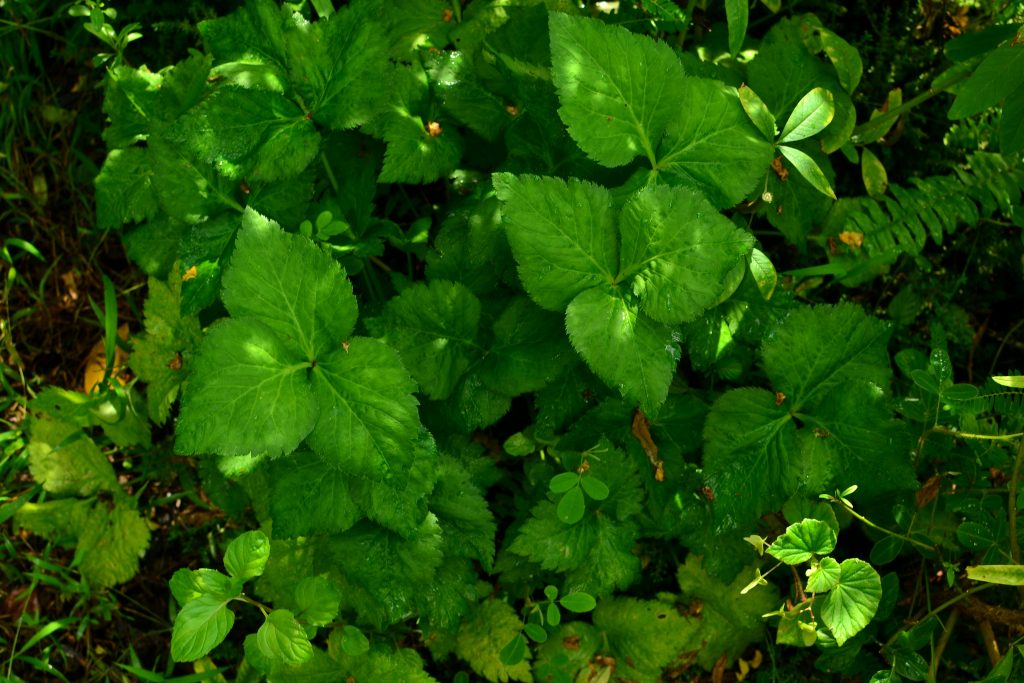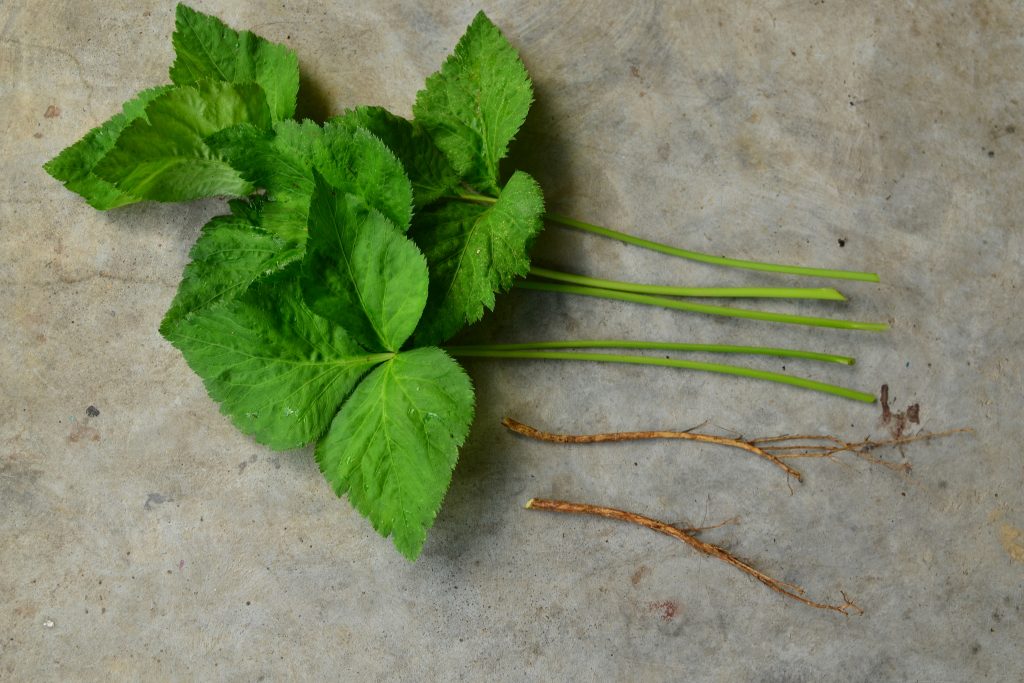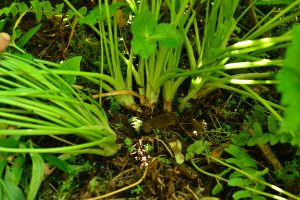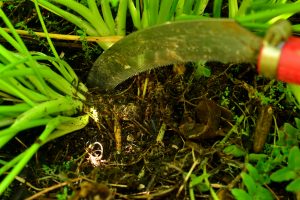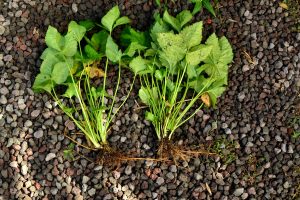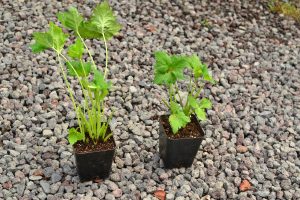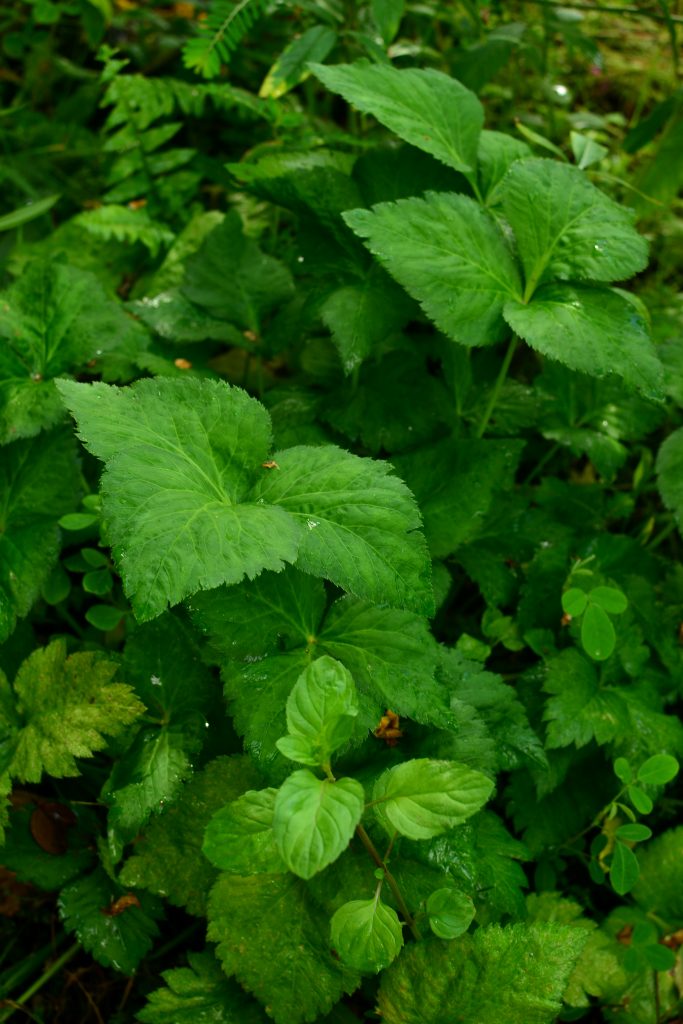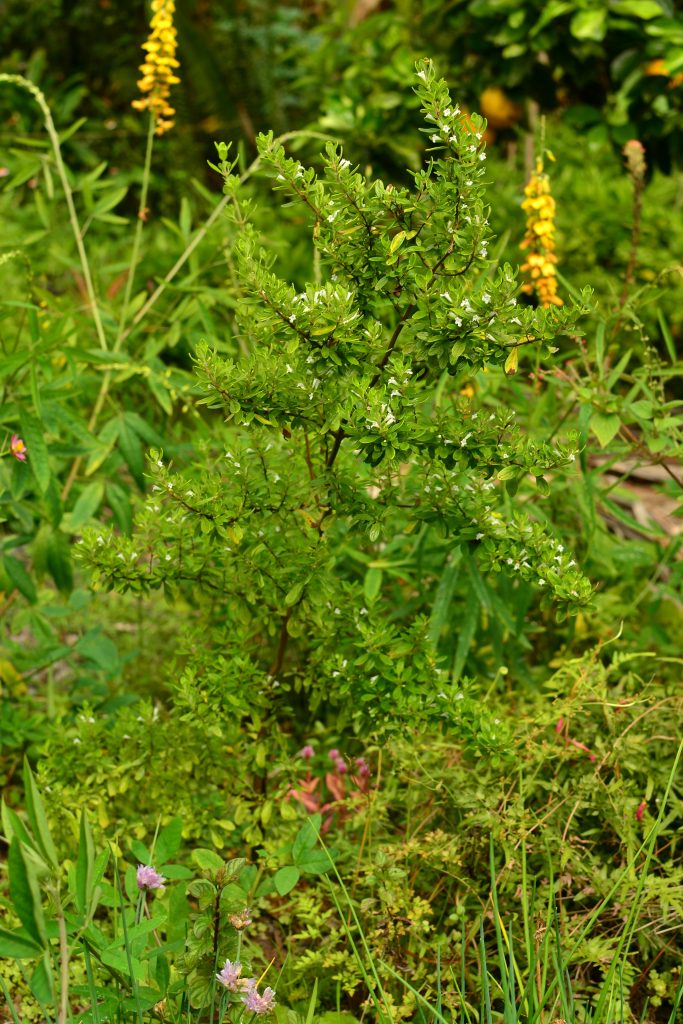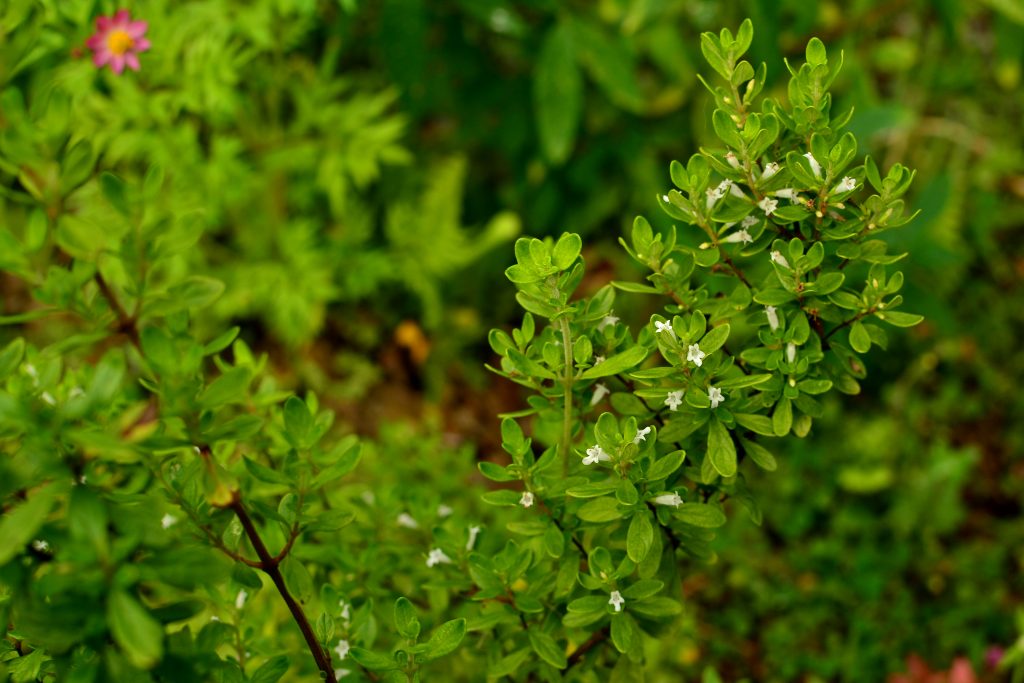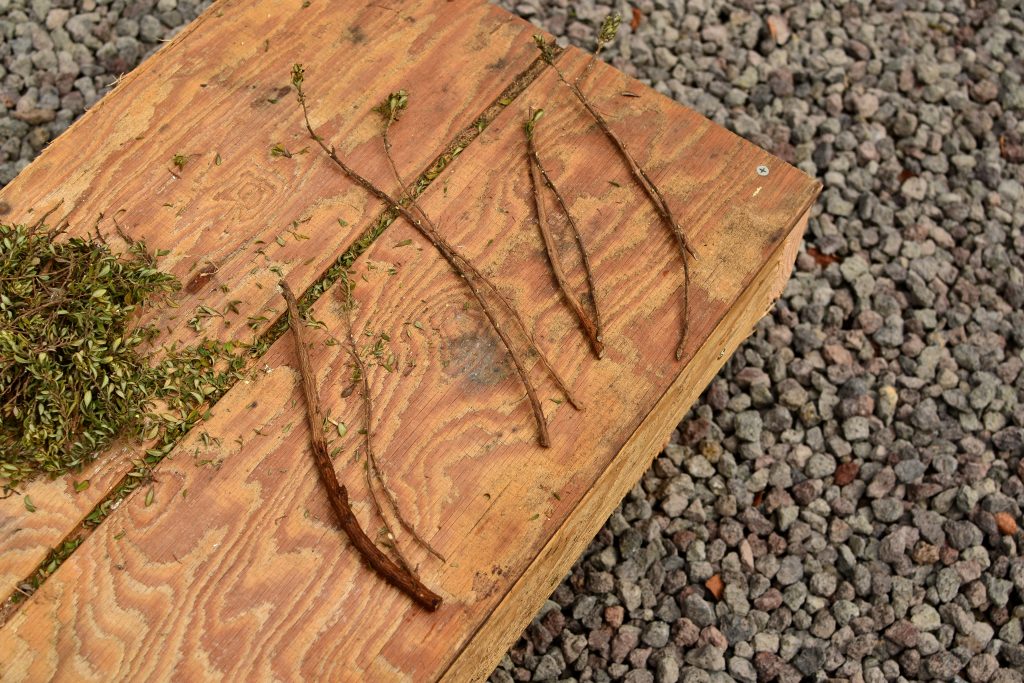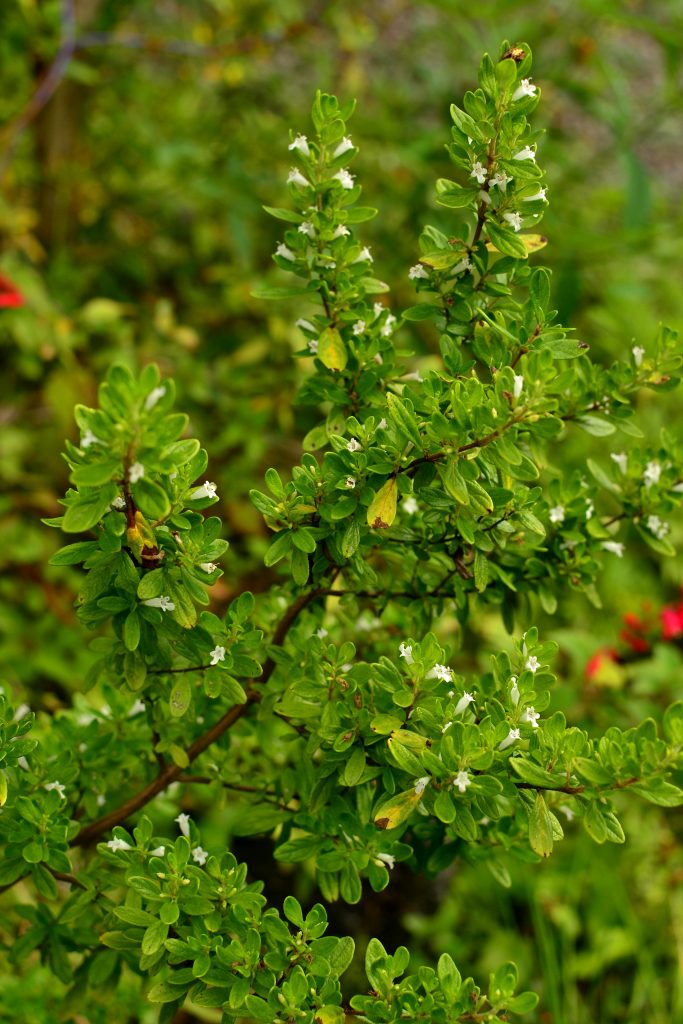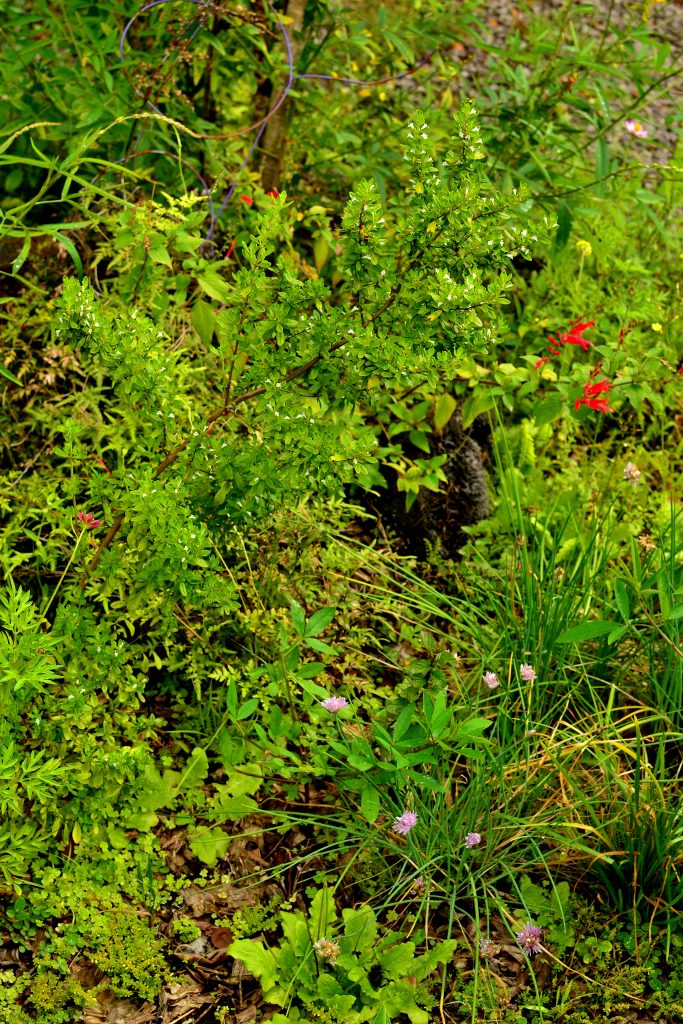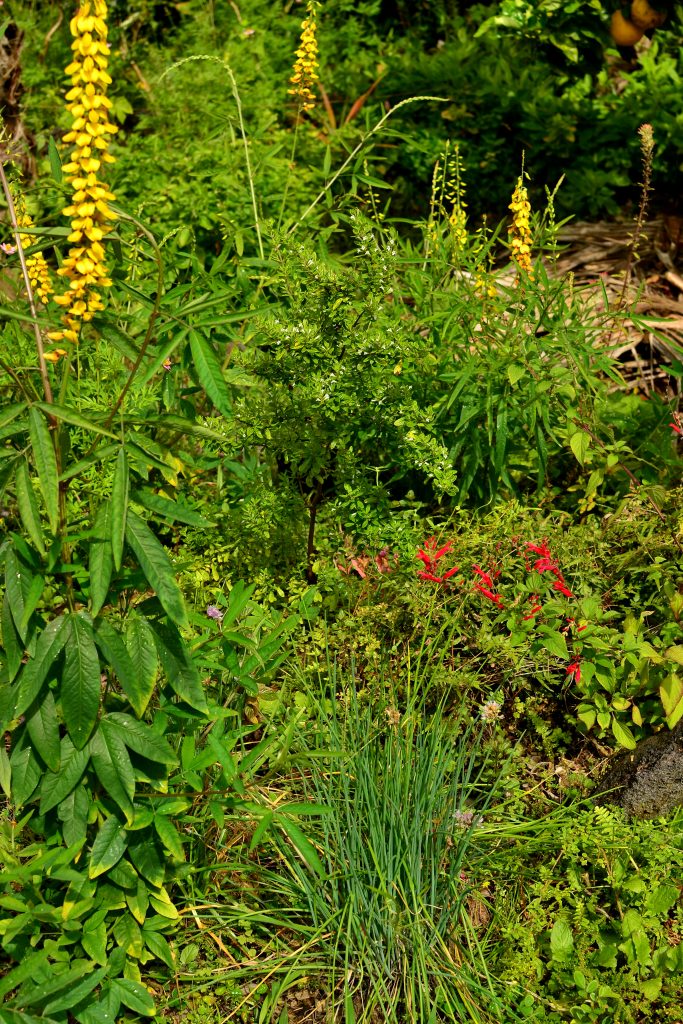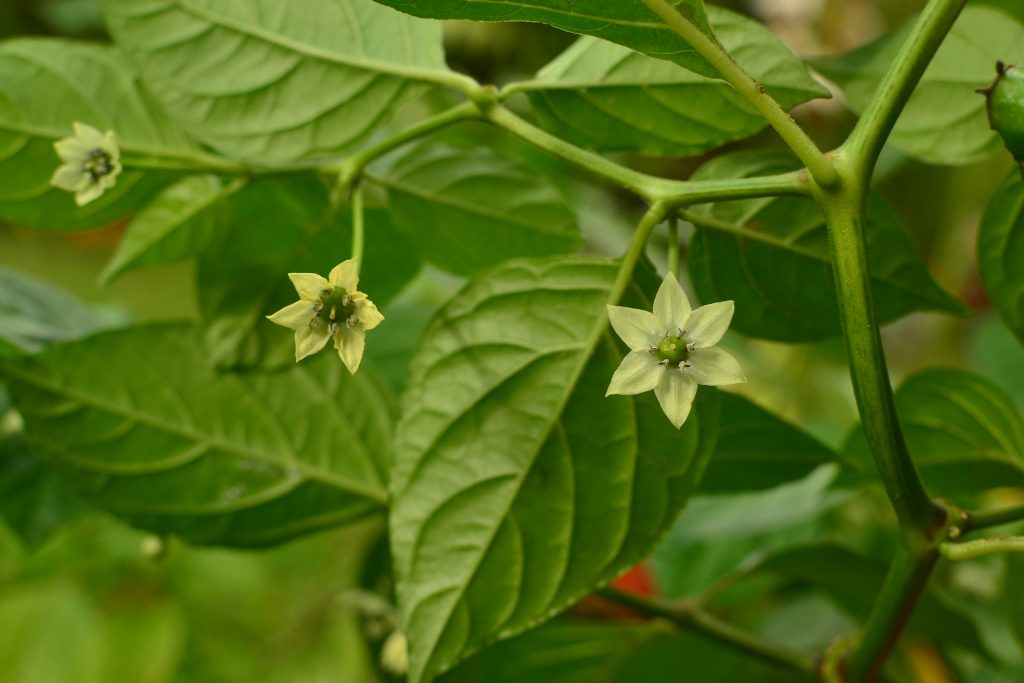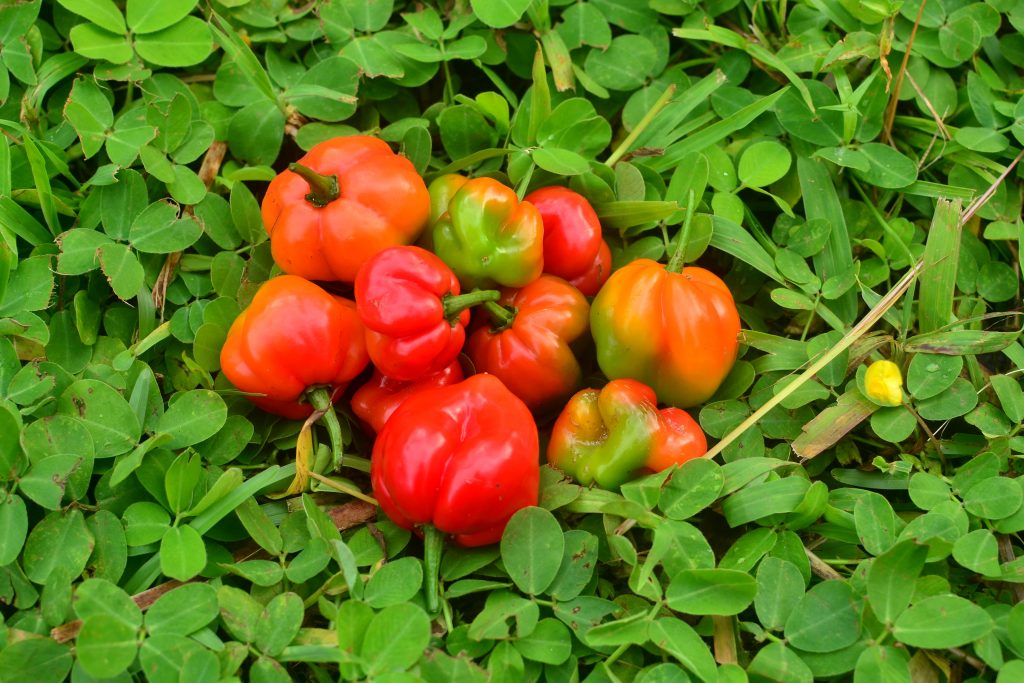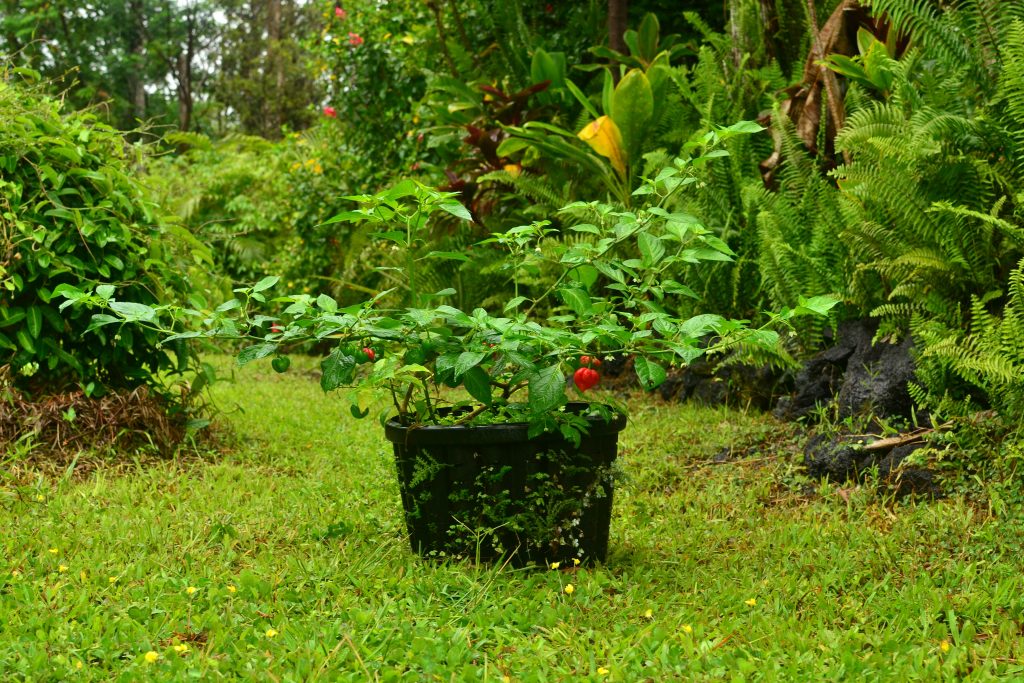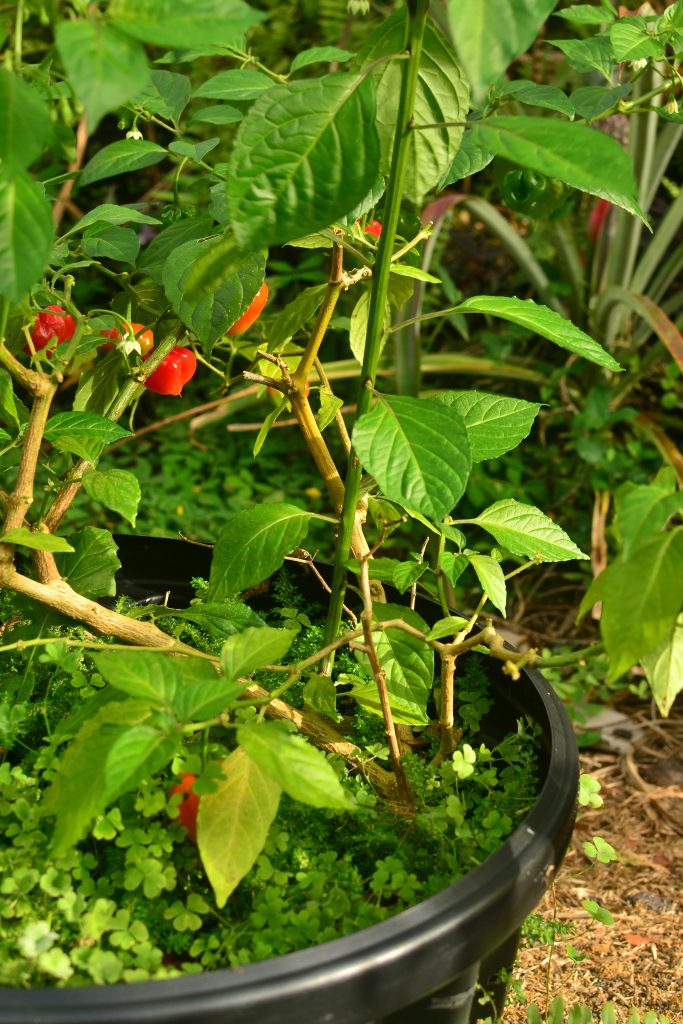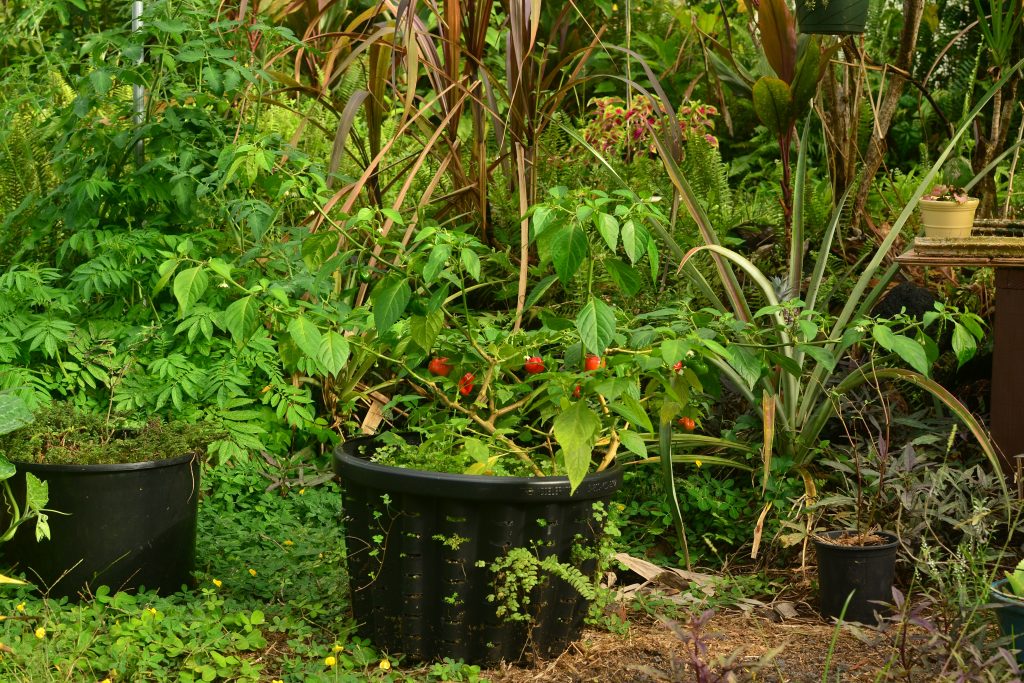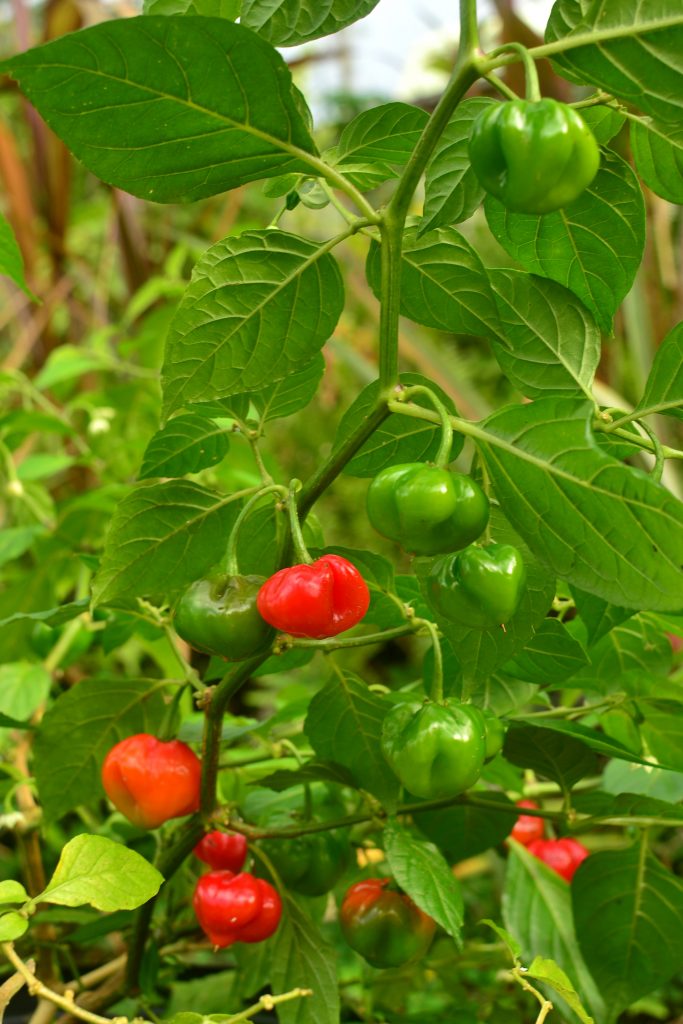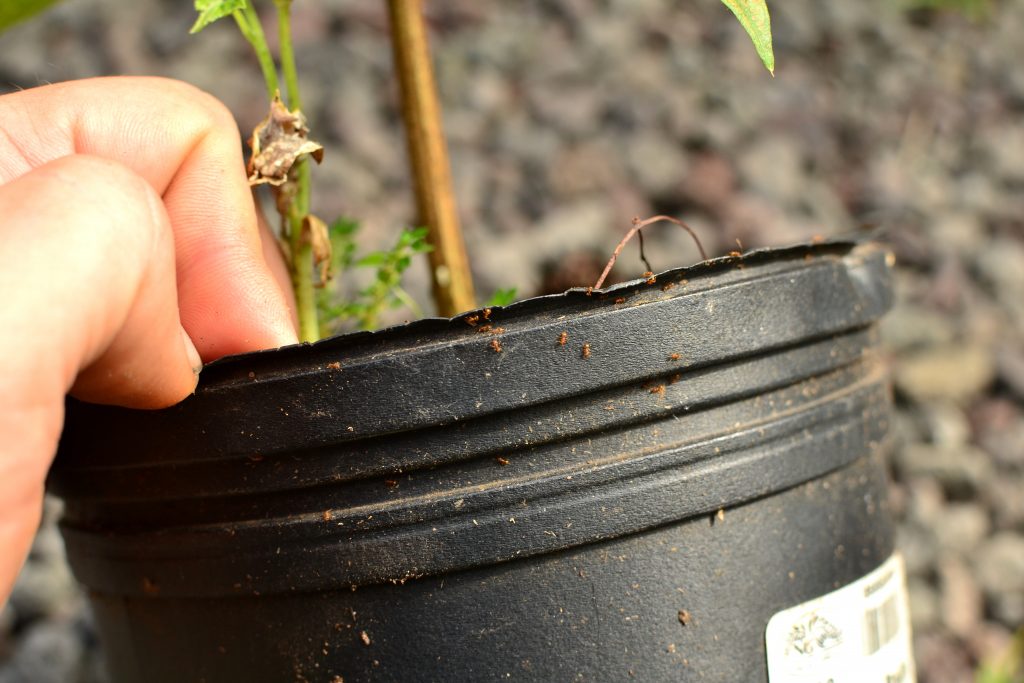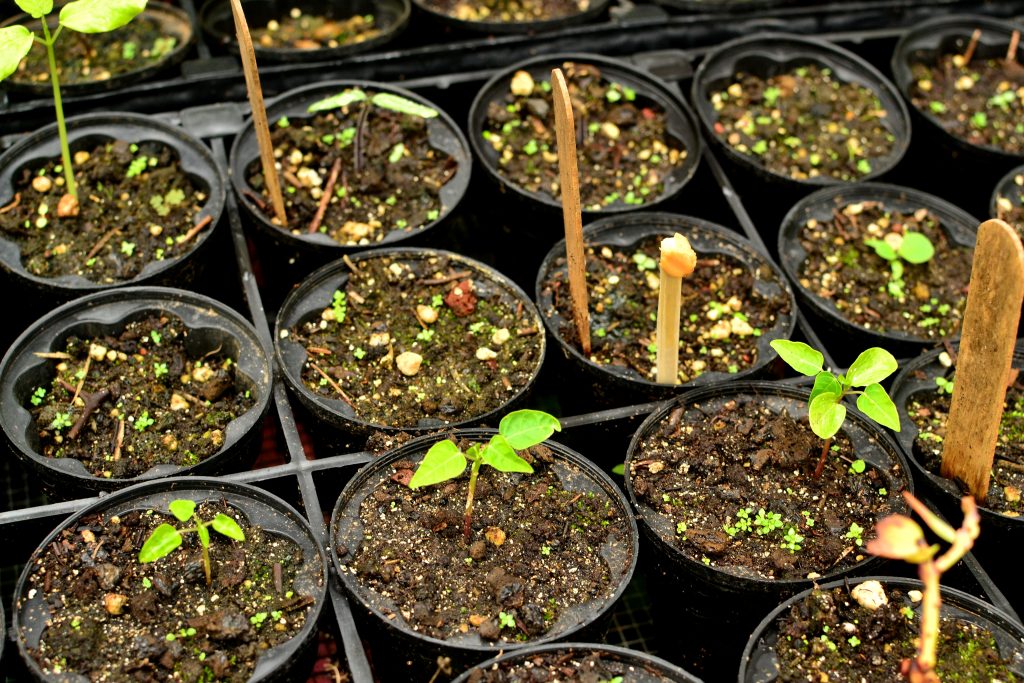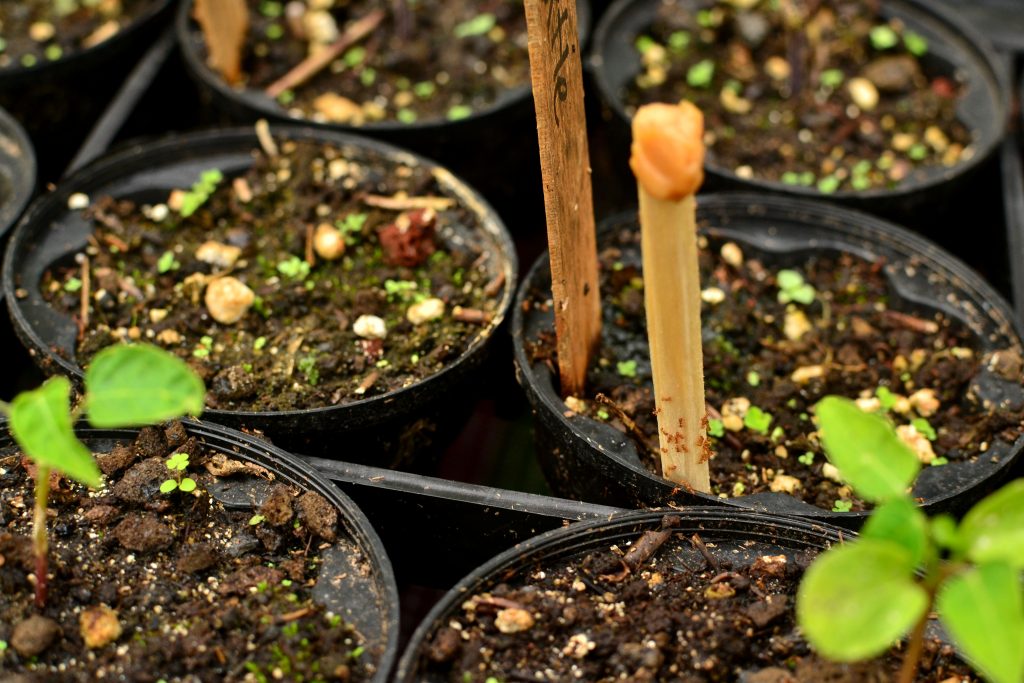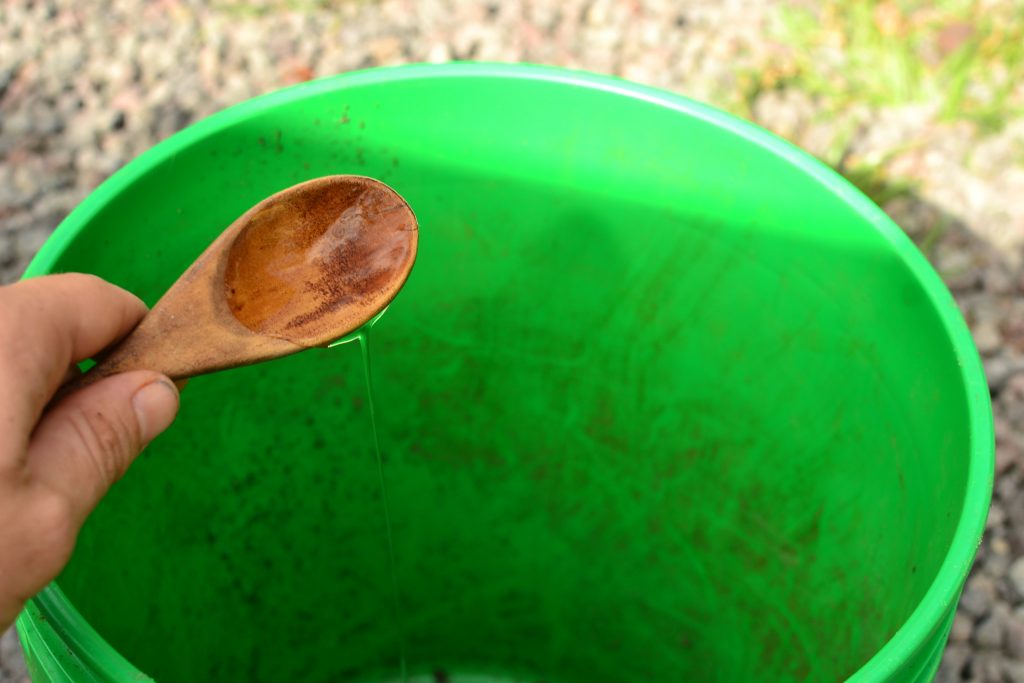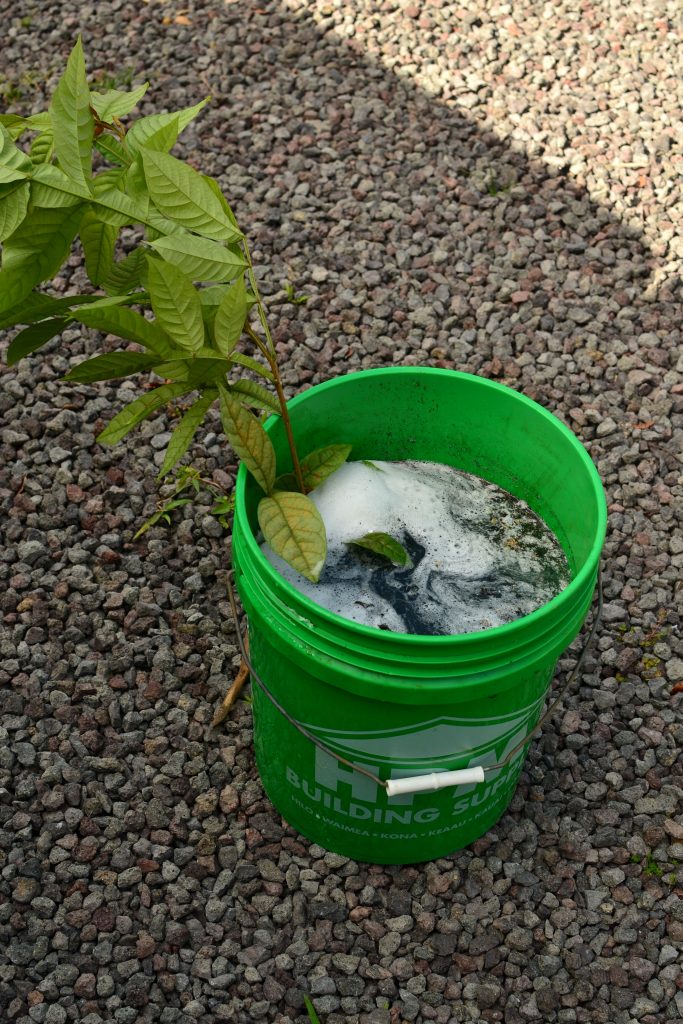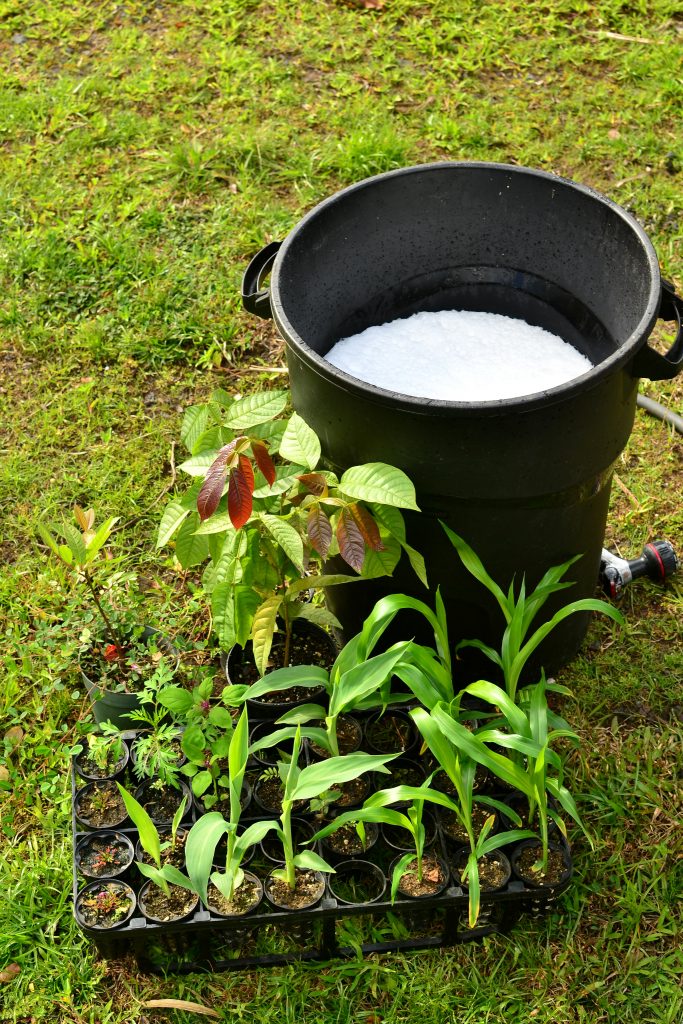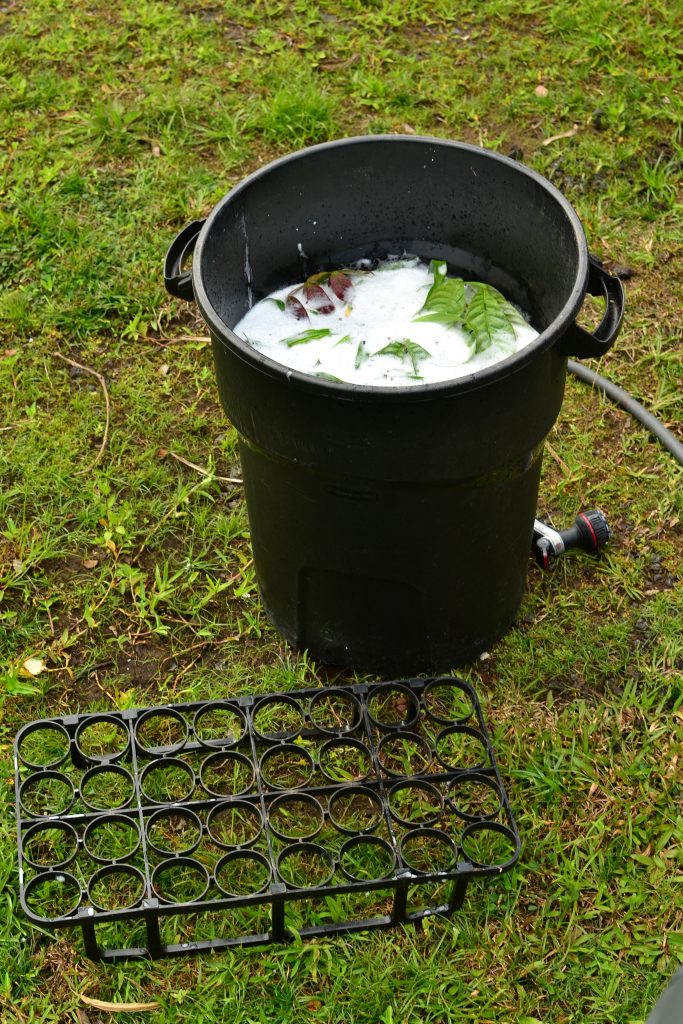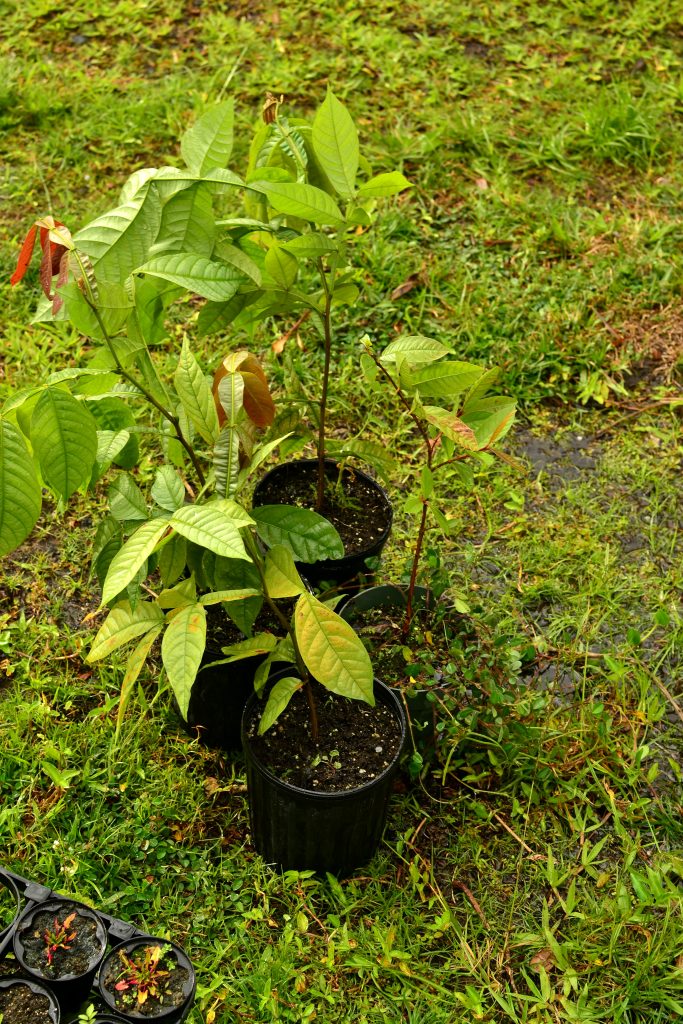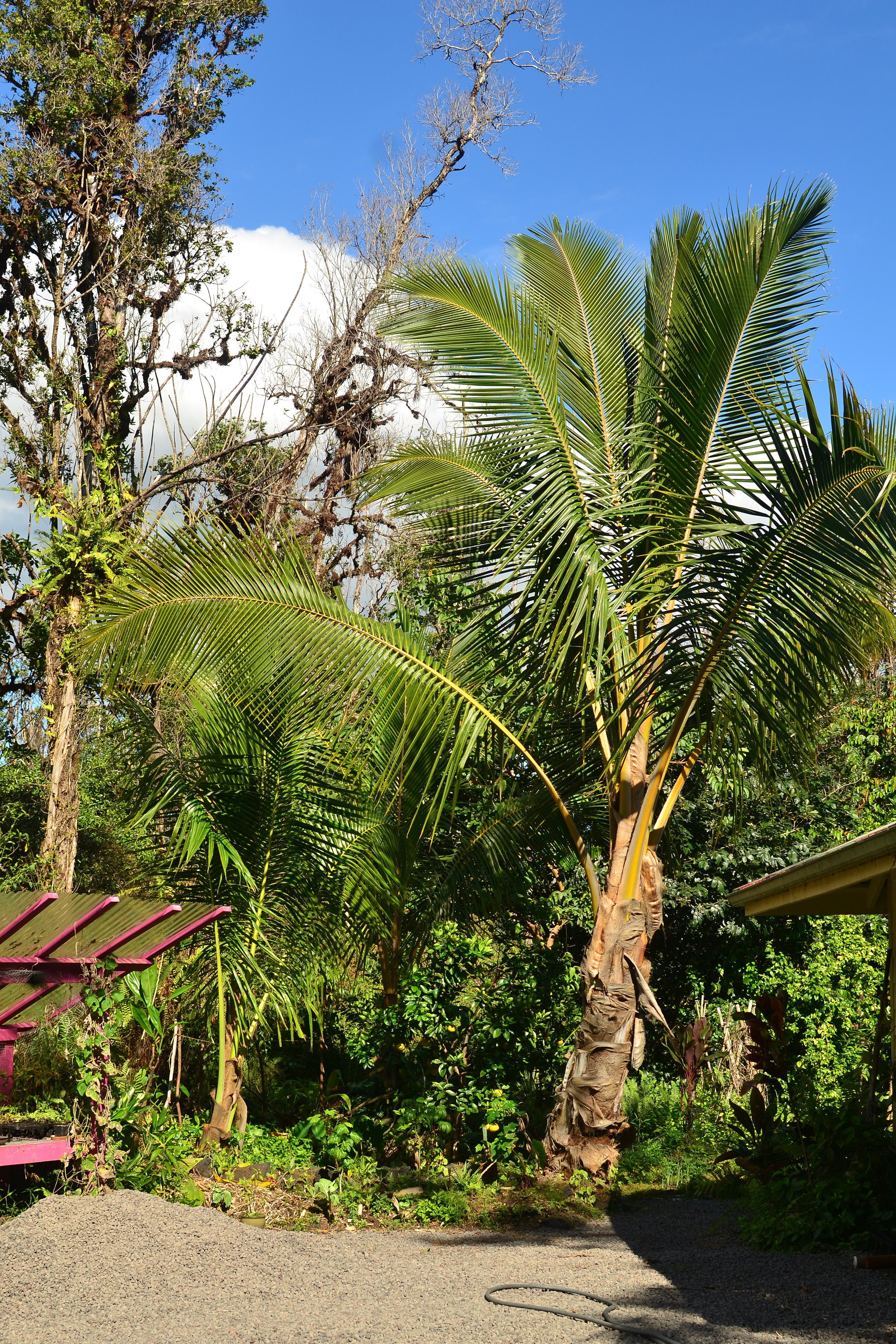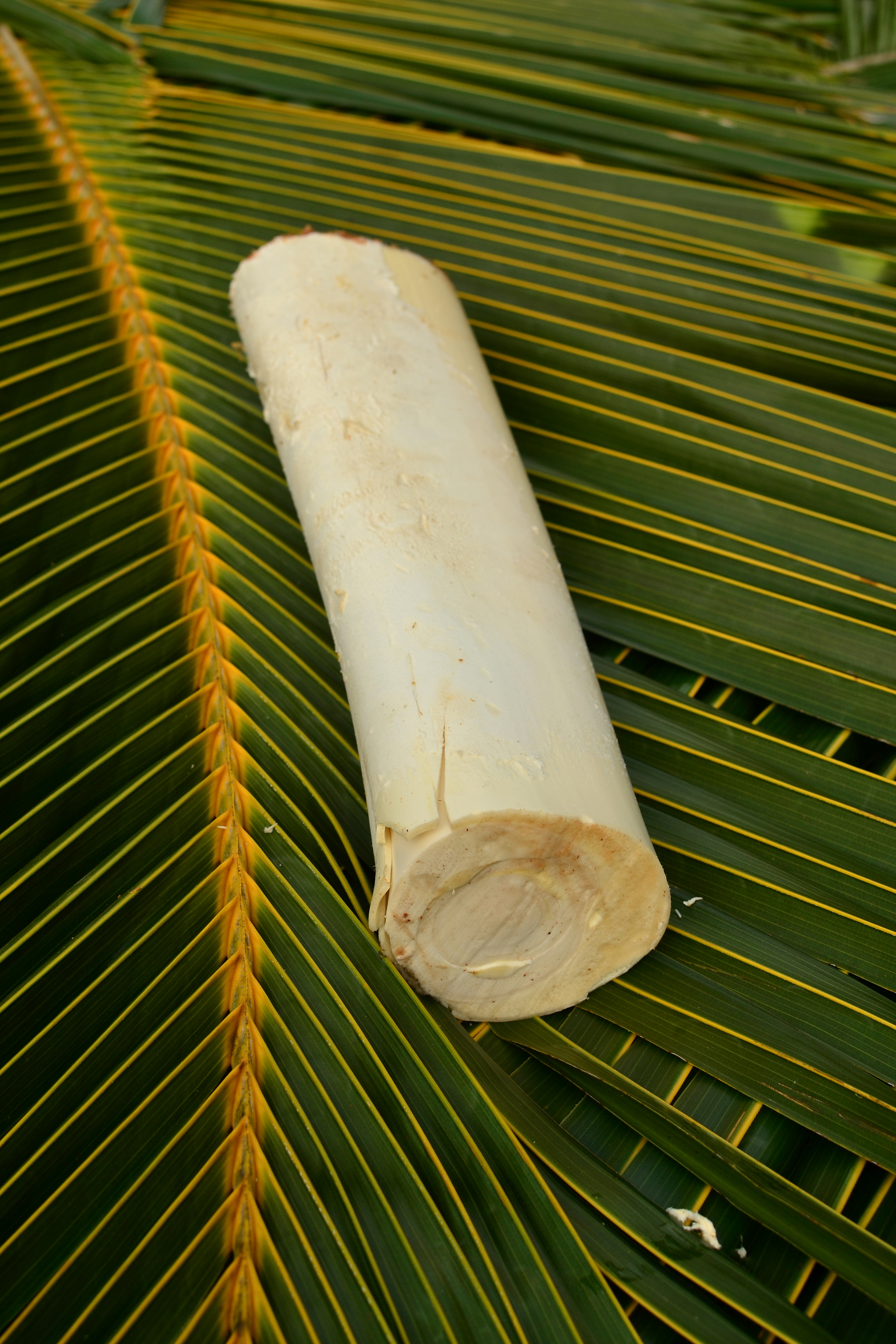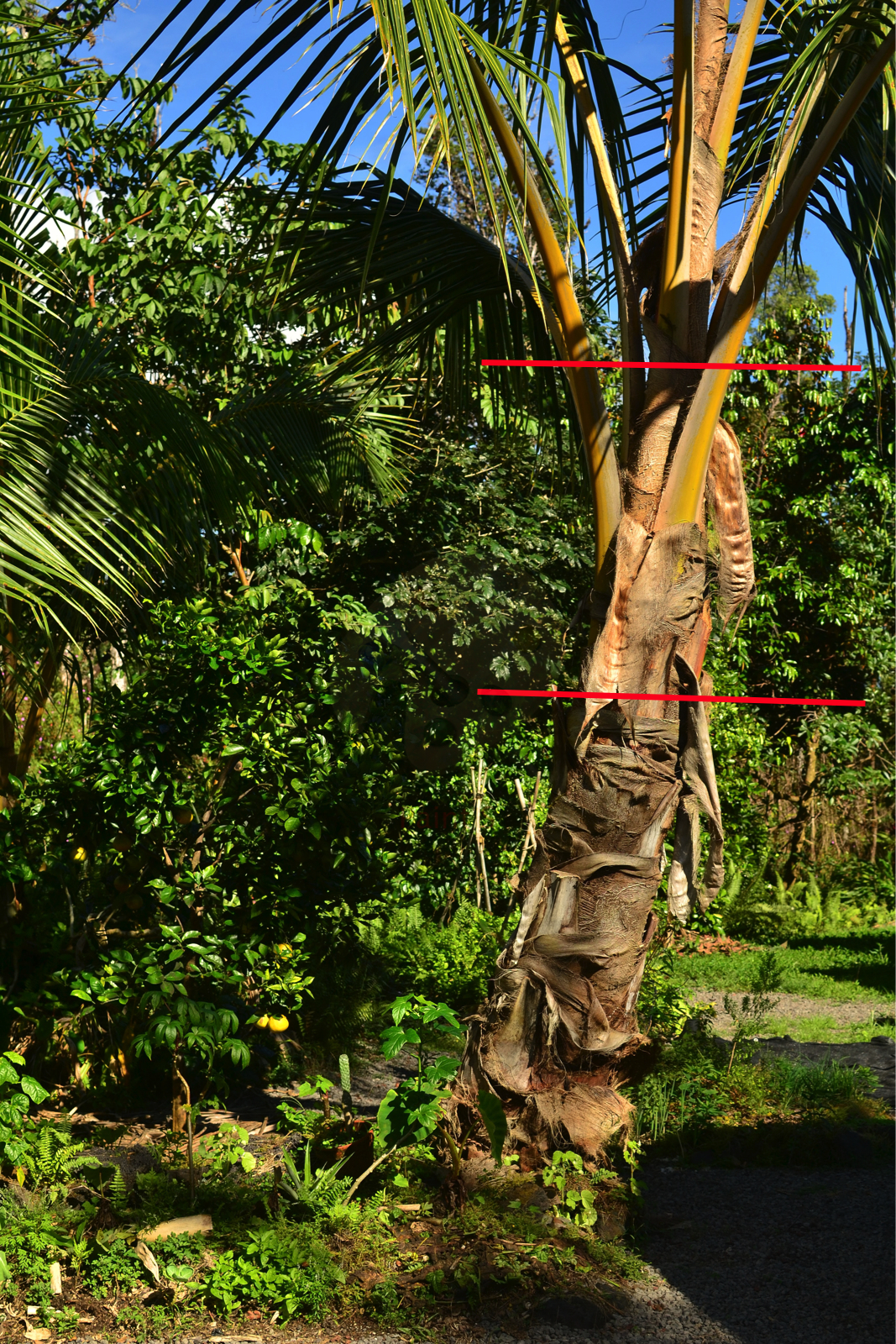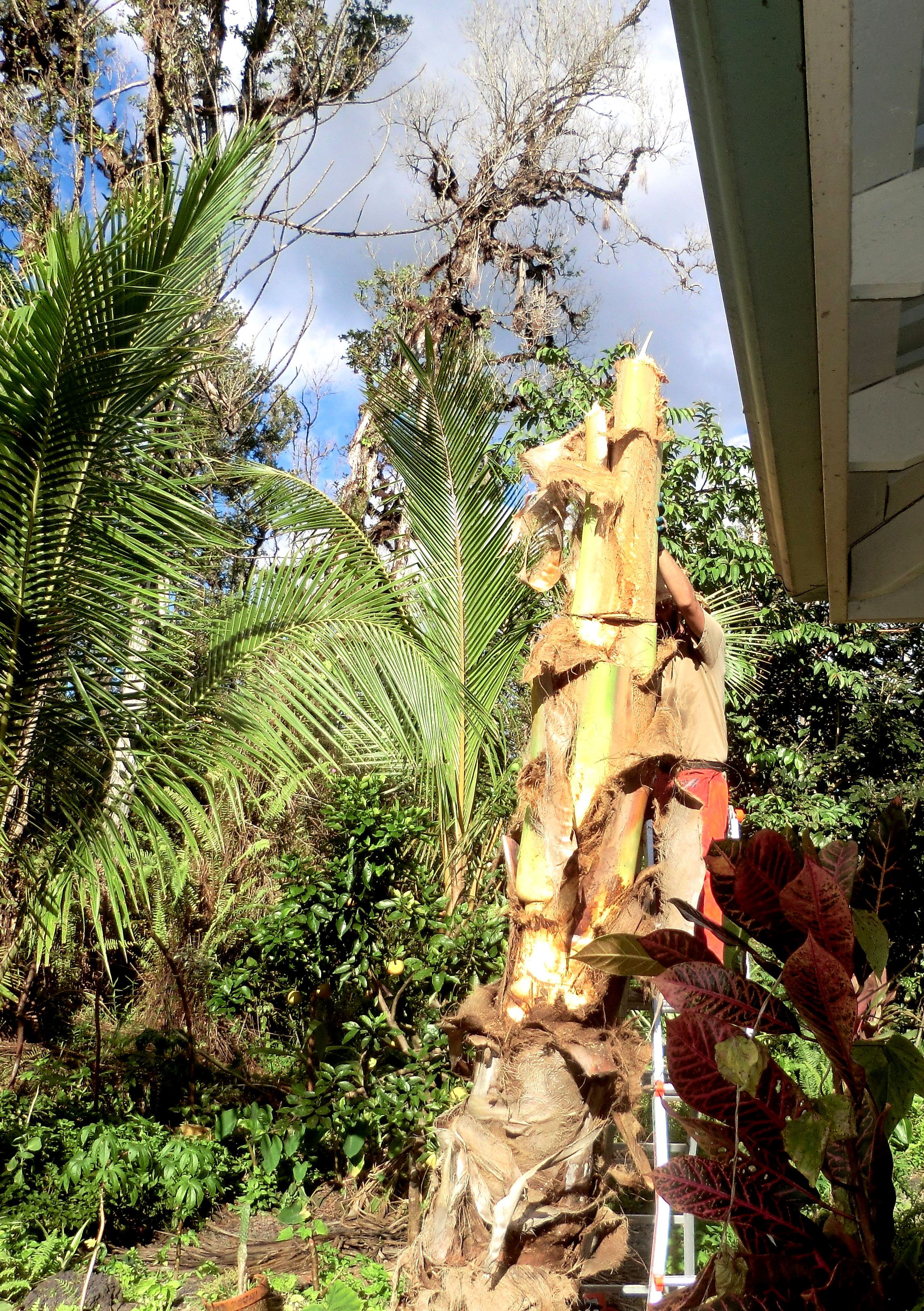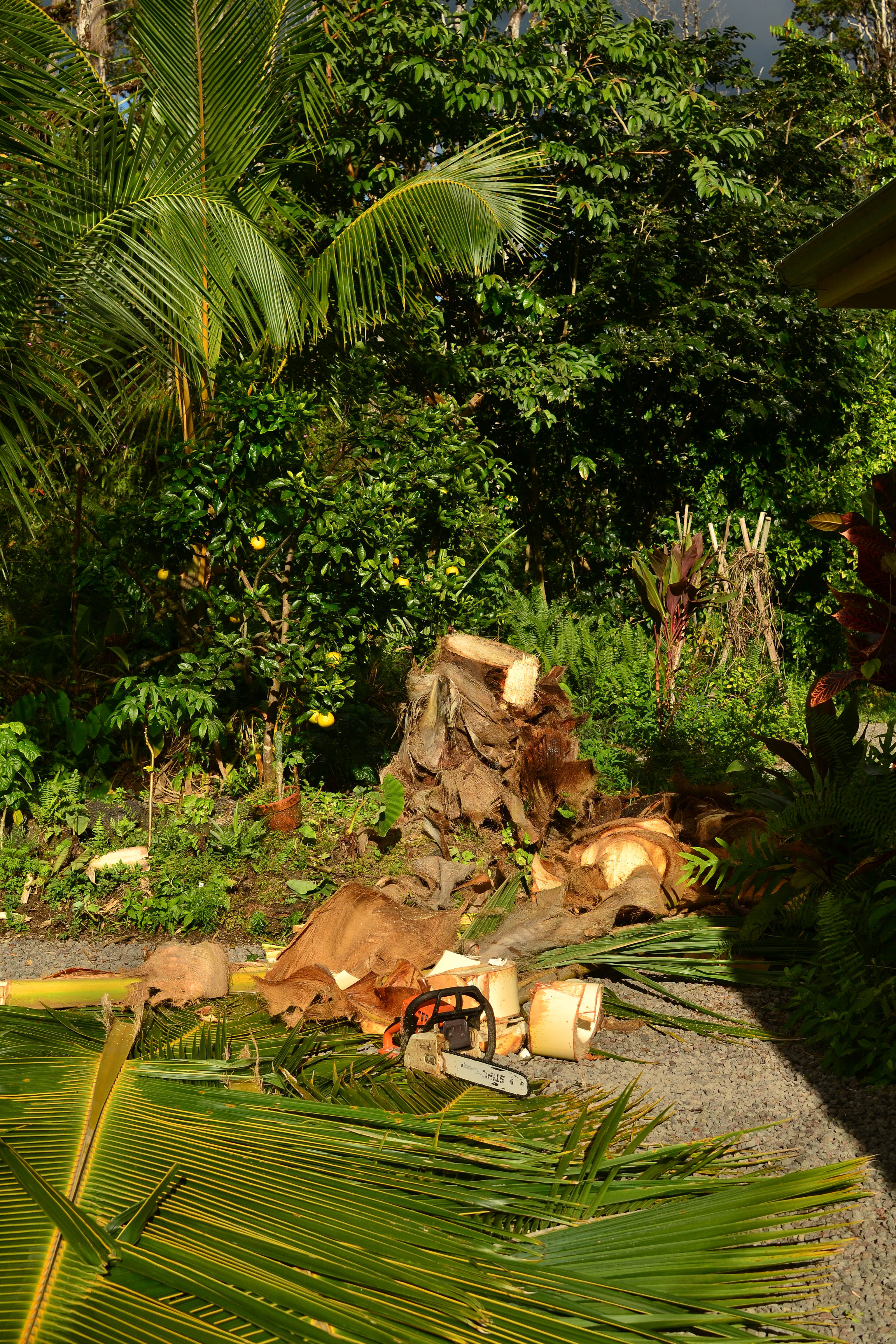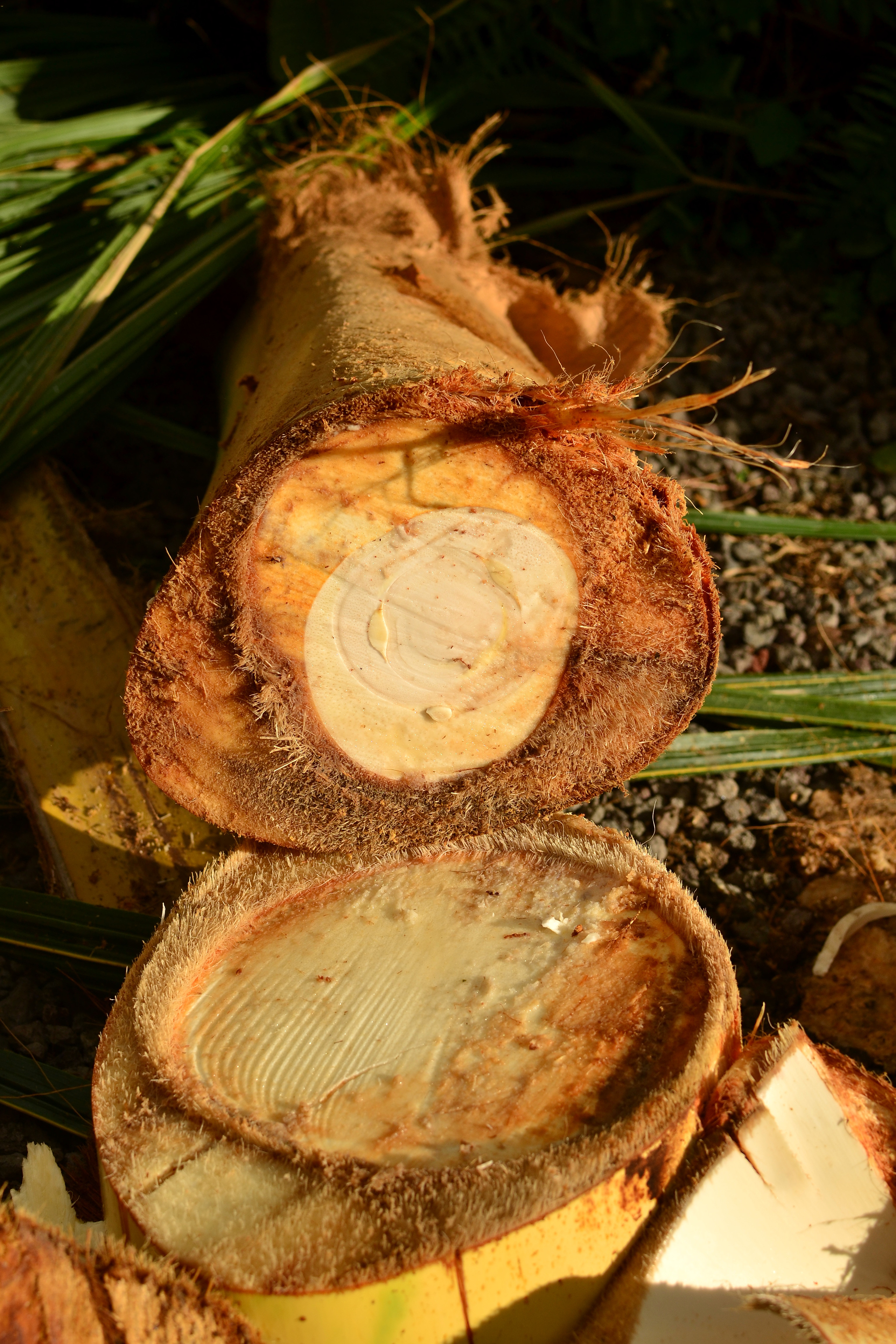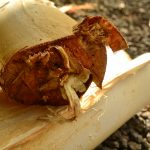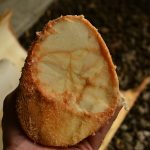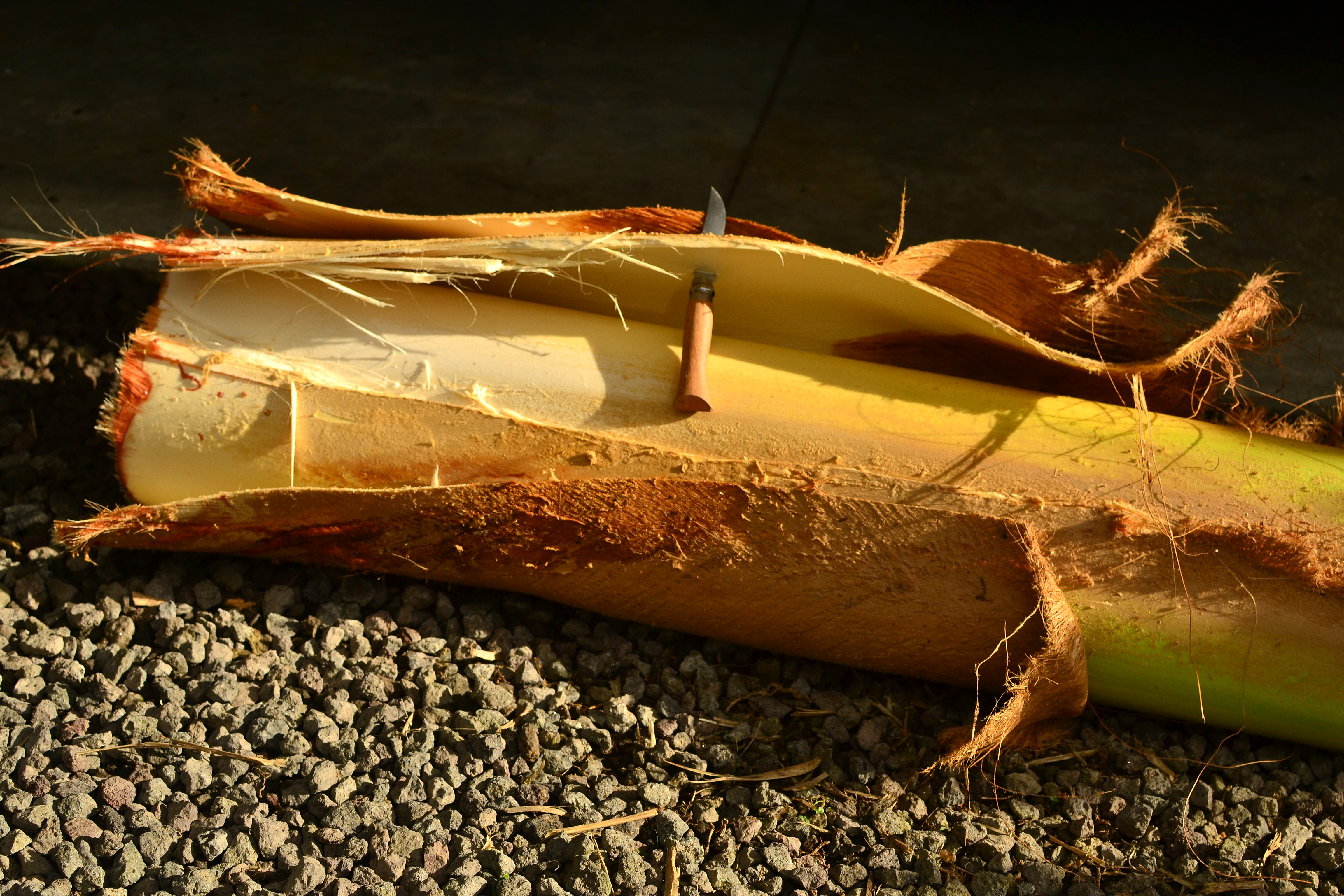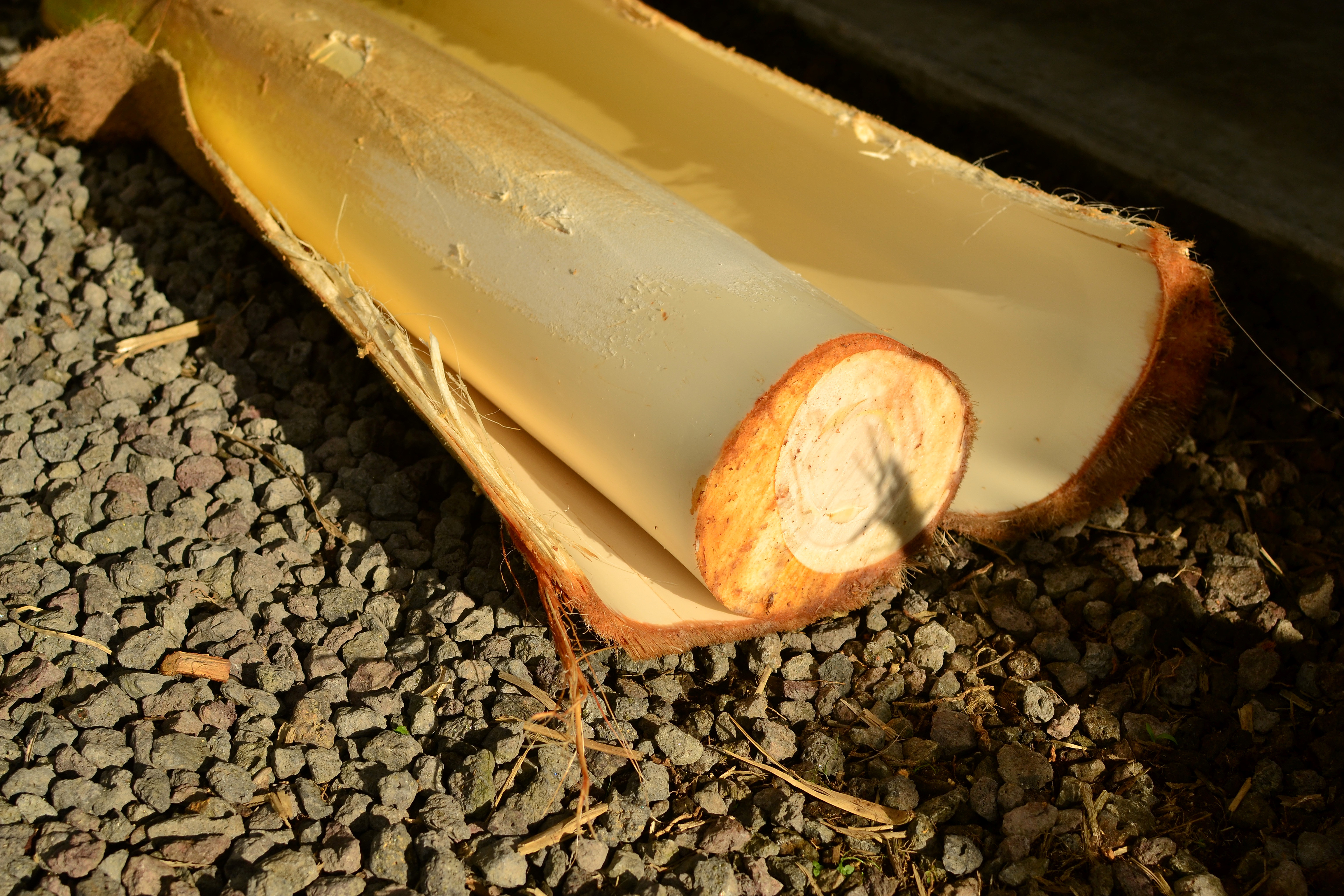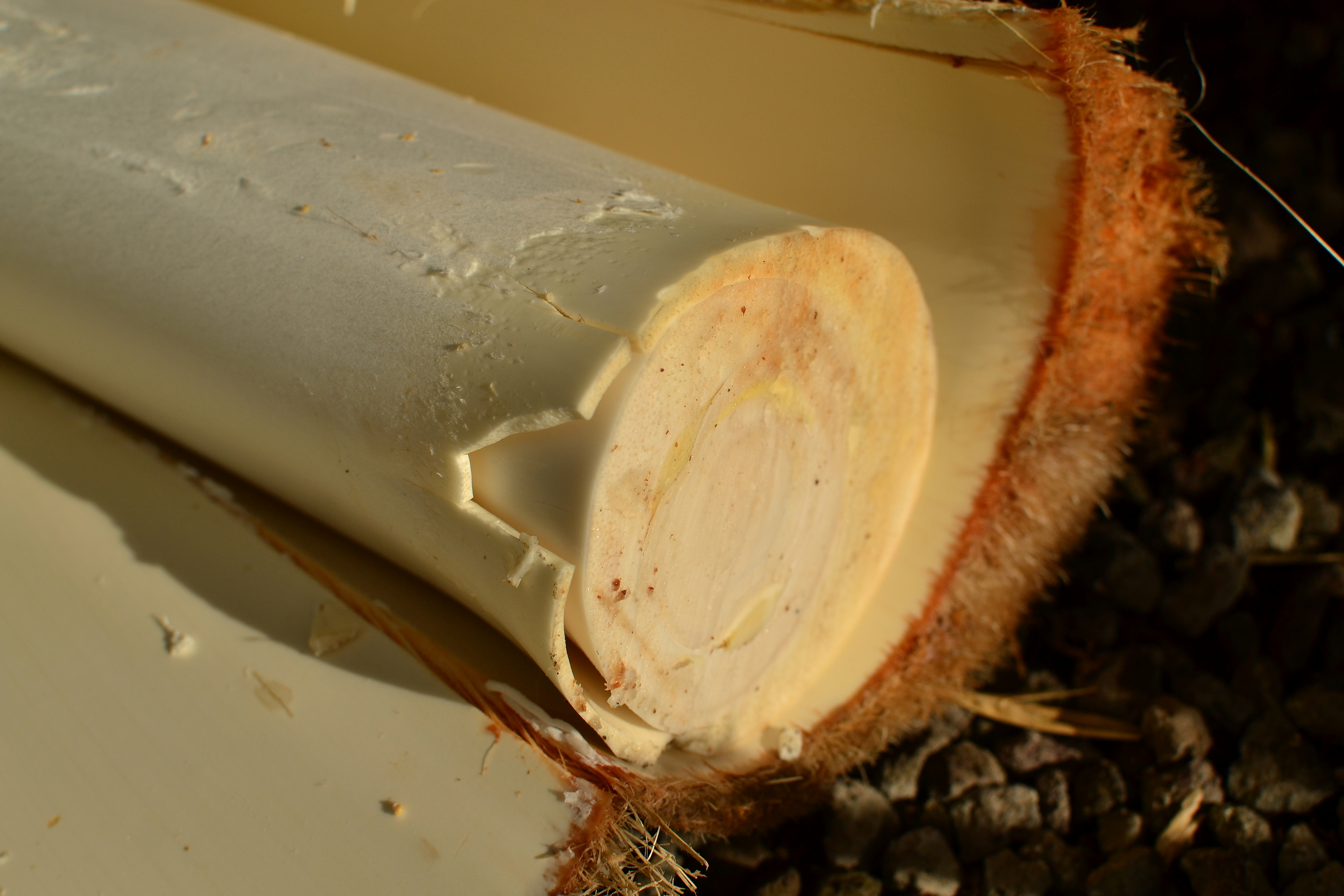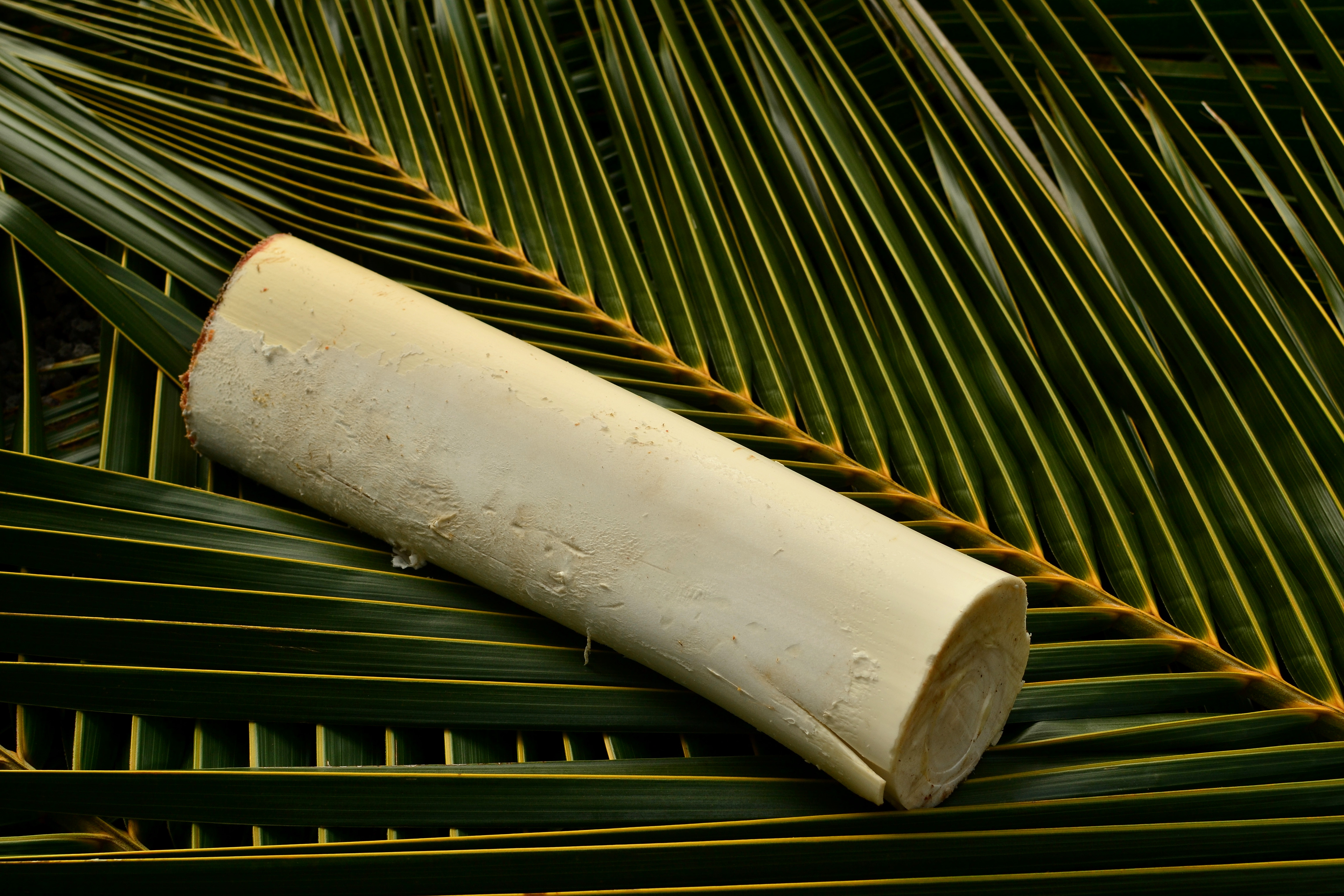Description
Bamboos (multiple genus and species) are huge perennial multi-purpose grasses. They may reach heights from 10-150 feet dependent on species. Bamboos are typically divided into two types: the runners and the clumpers. Runners grow from spreading rhizomes that sprout and continually ‘run’ from the original planting location, which could spread indefinitely, creating major invasive potential. New growth on clumpers gradually radiates out from the original planting in a relatively predictable pattern. Clumpers are generally more desirable as they are not as aggressive and do not readily spread into unanticipated locations. I only recommend planting clumpers as they can be more easily maintained.
Bamboos may be utilized in numerous ways. The tender new shoots may be eaten and the older, more mature stalks, or culms, may be used for building or as containers. There are many uses for bamboo and a lot of information on bamboos.
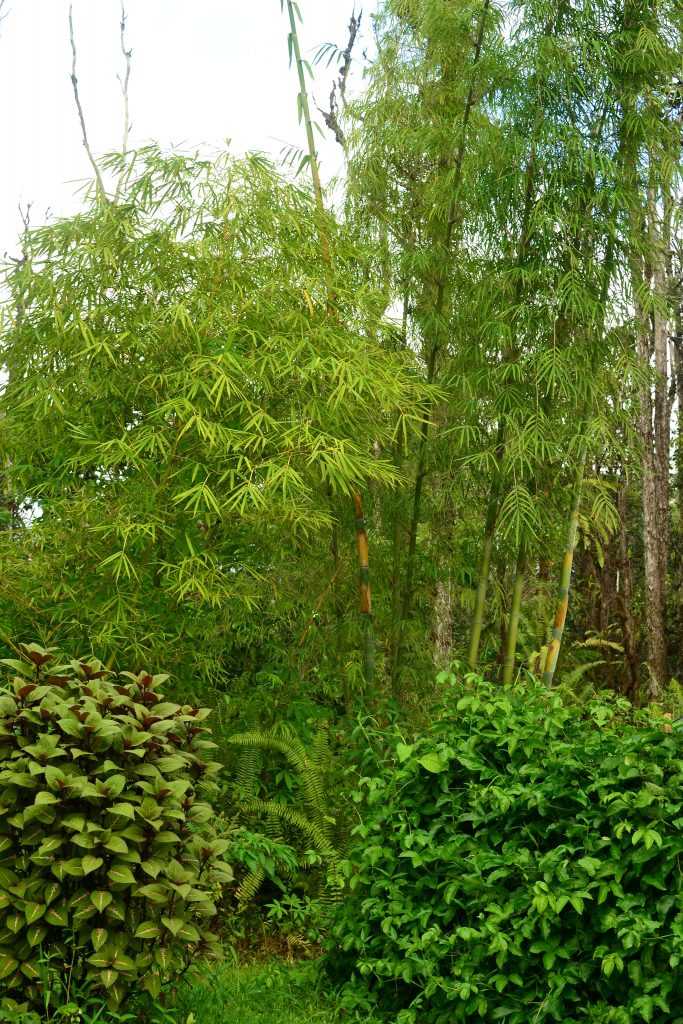
Bambusa ventricosa and Nastus elatus
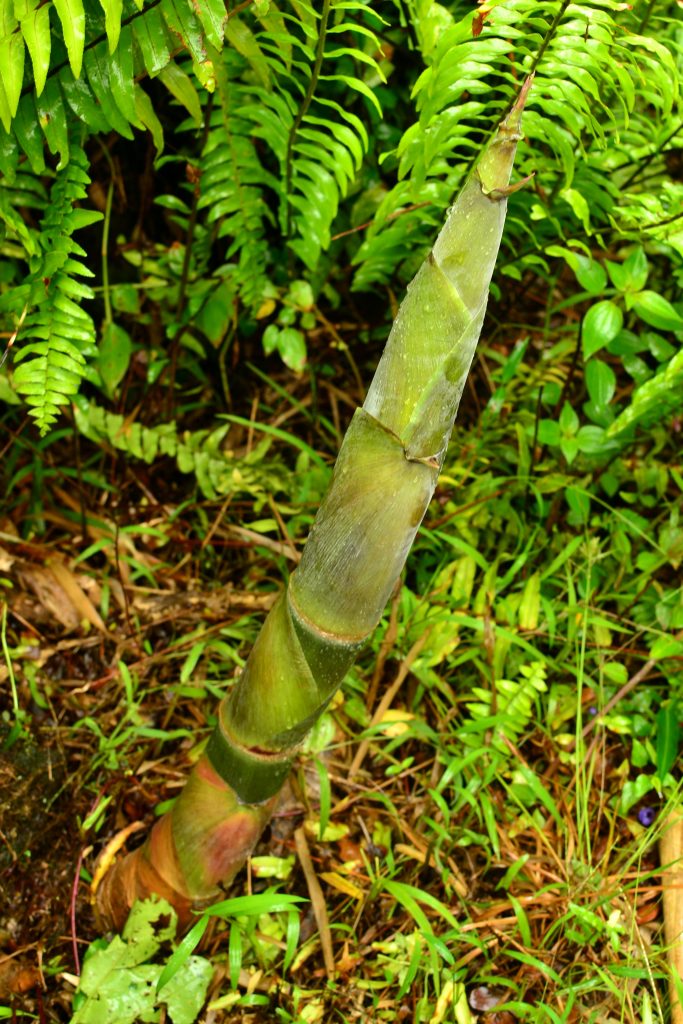
Nastus elatus – new shoots edible raw
Propagation
Propagation is from division, as seed is not typically produced. Dividing a clump may be done in numerous ways, being species dependent. The easiest way I’ve found for propagation is to take a mature culm, cut it off the parent plant, strip off leaves and cut the culm into segments of at least four nodes. Dig a narrow trench to allow the culm segment to fit horizontally into the trench fully below the soil surface. At this point you allow the culm to do its thing for a few months (four to six months, usually) and they will send up new shoots when ready. Once you notice the new shoots, you may dig up the originally planted culm and with a handsaw, divide dependent upon how many shoots emerged. Pot them up individually and you now have a clone, or multiple clones from the parent clump.
Care
When young, plan to weed regularly; bamboos start slowly and have the potential to be overtaken by other vegetation. It seems there are two “seasons” for bamboo: the above ground growing season and the below ground growing season. So, this means that you only see visual growth six months of the year. You may think they are dormant or not growing, but they are in fact getting ready for their intense above ground growing season by working underground. Once they get going, regular fertilizing will enhance growth.
As clumps age, regular maintenance will be necessary. Remove any dead/fallen over stalks. Dependent upon on how you decide to utilize the clump, that will determine how it should be managed. Culms can be selected out for straight growth (timber applications), or thinned for an easier bamboo shoot harvest. Regular pruning of lower branches creates a trouble-free working space and allows the bamboo to look “cleaner.” All bamboos have different growth patterns; be sure to research what to expect before selecting species. I prefer bamboos with minimal to no lower branches as they are easier to work and walk around.
Quick tips for mature culm management: Get yourself a nice bamboo specific handsaw – this will allow for nice quick detachment from the parent plant; always cut bamboo at the nodes. If using bamboo for building, use a ring of tape around the culm above your cut line to prevent the bamboo pole from splitting during cutting. Curing may or may not be useful for specific bamboo purposes. Look into the multiple methods for curing. I’ve had uncured culms last two years or more without any decomposition issues.
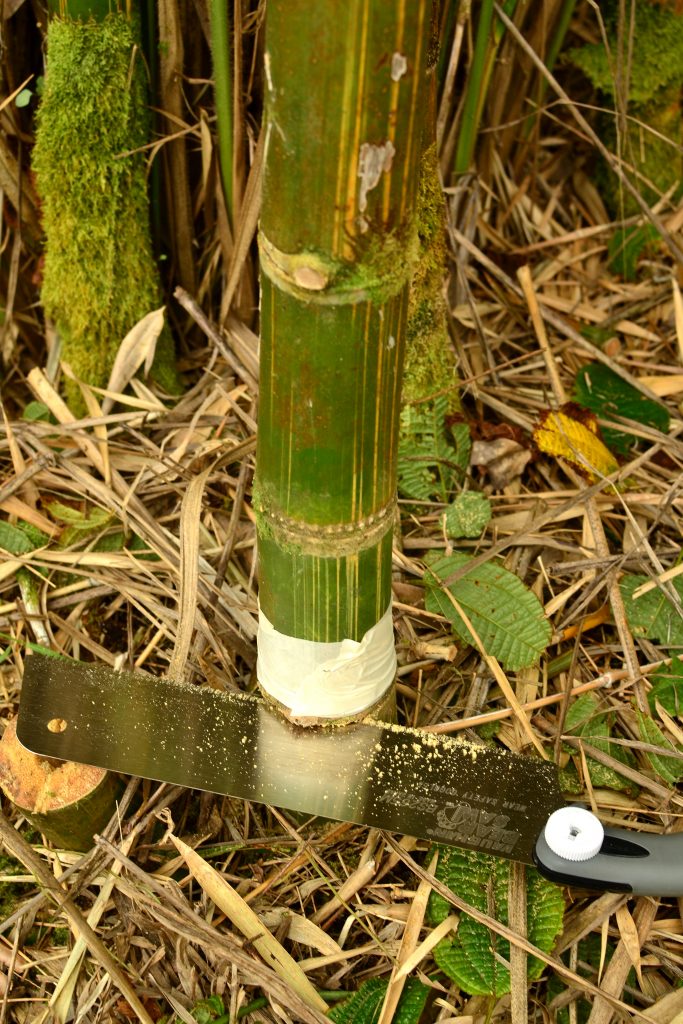
Use bamboo specific handsaw for timber management. On thin walled bamboos it may be ideal to use a tape ring to prevent bamboo from splitting when cutting
Eating
Bamboo shoots are delicious! Careful selection of species allows for selection of desirable traits. My most recommended species is Nastus elatus as this plant plays nicely with others; it has an upright habit with minimal to no lower branching. This plant also produces new shoots that are edible when raw. (Not all bamboos are edible raw, and many contain higher levels of cyanogenic glycosides that needs to be cooked for a while before it becomes edible.)
When new culms appear, they start off and sprout quickly and grow a few inches before stalling. During this period, they are gathering energy for the rest of the growth of that culm. This stall period is when you want to harvest shoots for consumption. Simply cut off new shoot as low as you can. Peel off outer sheaths to reveal a tender – usually white – inner core. That is what gets eaten.
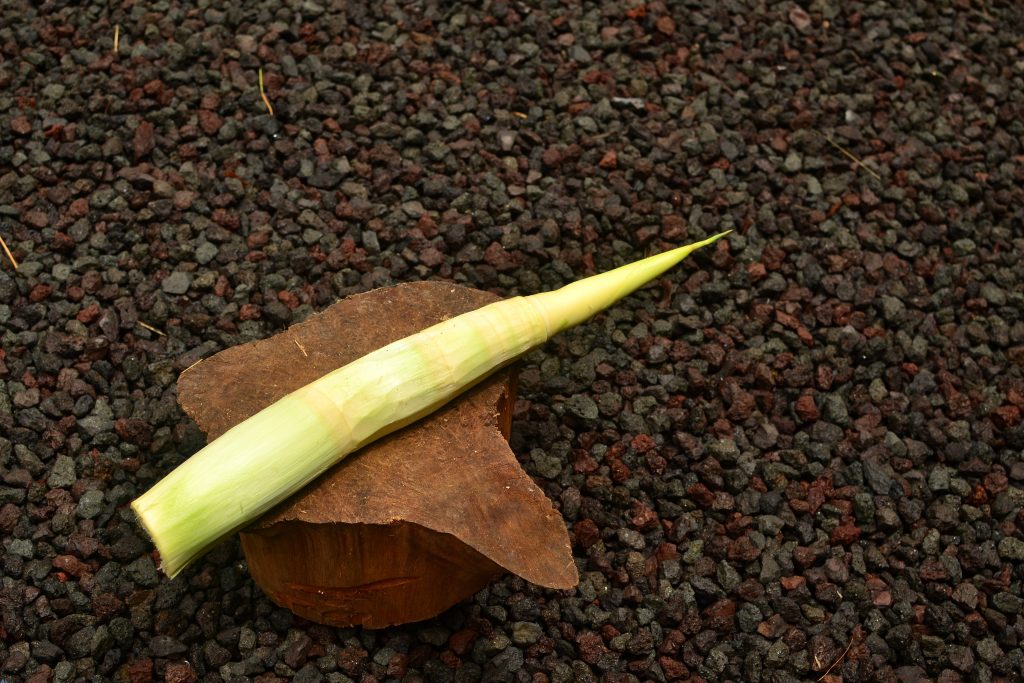
Edible shoot with outer sheaths removed – ready for consumption
Where to obtain planting materials
There are a handful of nurseries that sell potted plants (usually quite expensive). Or ask a friend with a clump mature enough to try to divide from. Try various methods for propagation to determine what works best, or do some solid research and figure out what other people suggest to propagate that specific species.
My Garden
I’ve been growing a handful of bamboos for a few years now. One of my clumps is old enough to be regularly producing new edible shoots, and due to me not planning out the best location for this bamboo, I need to regularly harvest it so it wont grow into my catchment. This means I get regular shoot harvests as I maintain that clump and slowly thin it out. You really should take the time to plan out the location for the height and spread of a bamboo clump. They are really quite prolific and dominating plants, yet their beauty and usefulness is enticing.
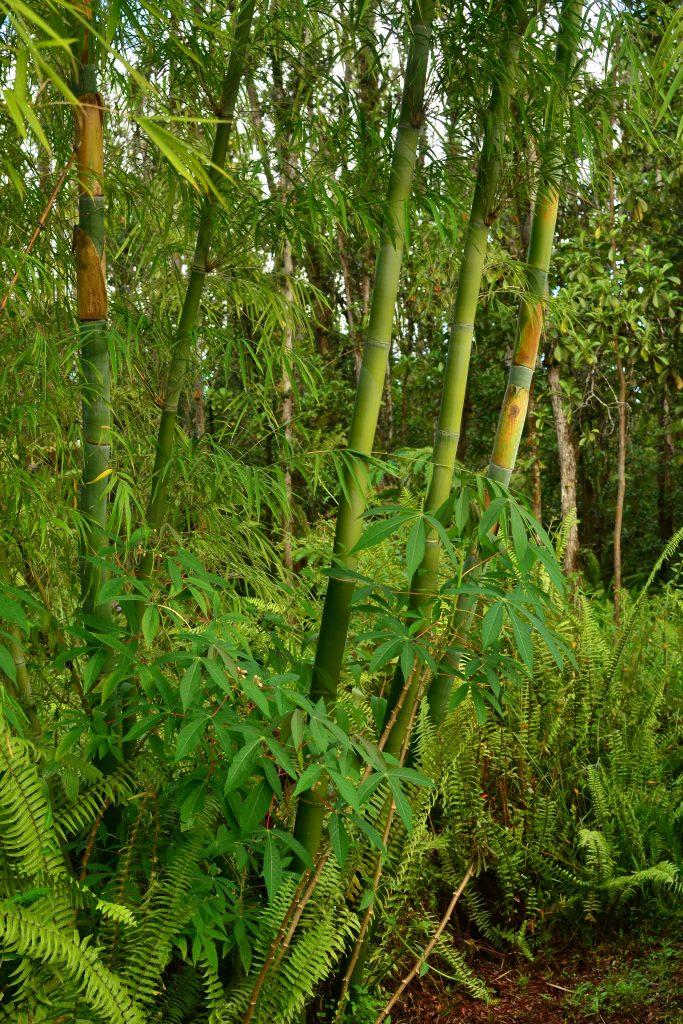
Nastus elatus branch-less habit
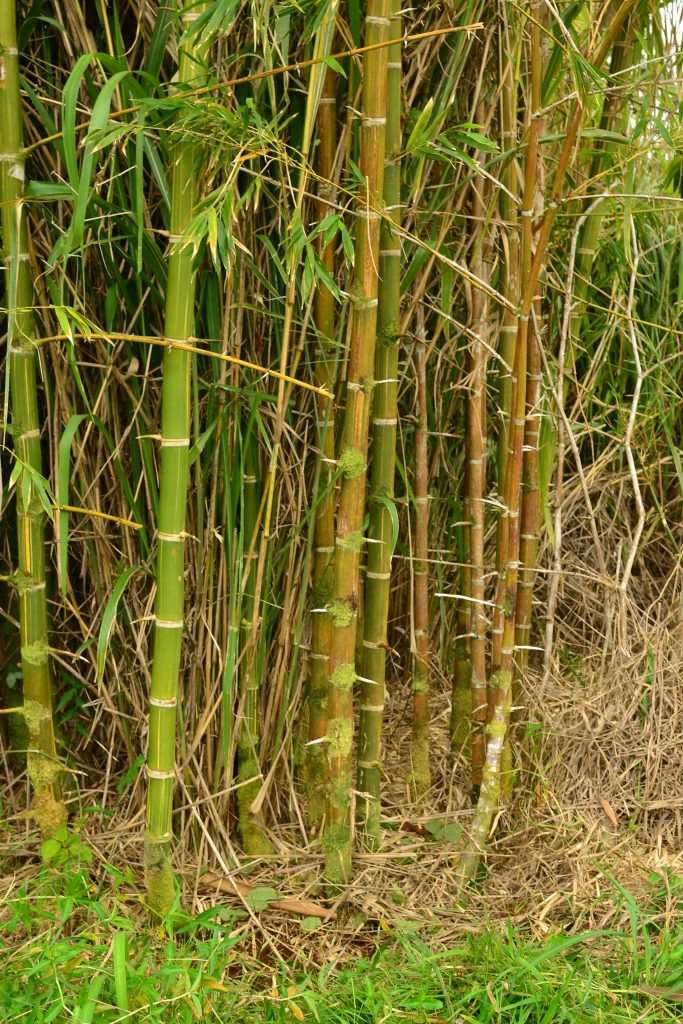
Guadua angustifolia – thorny/branched habit
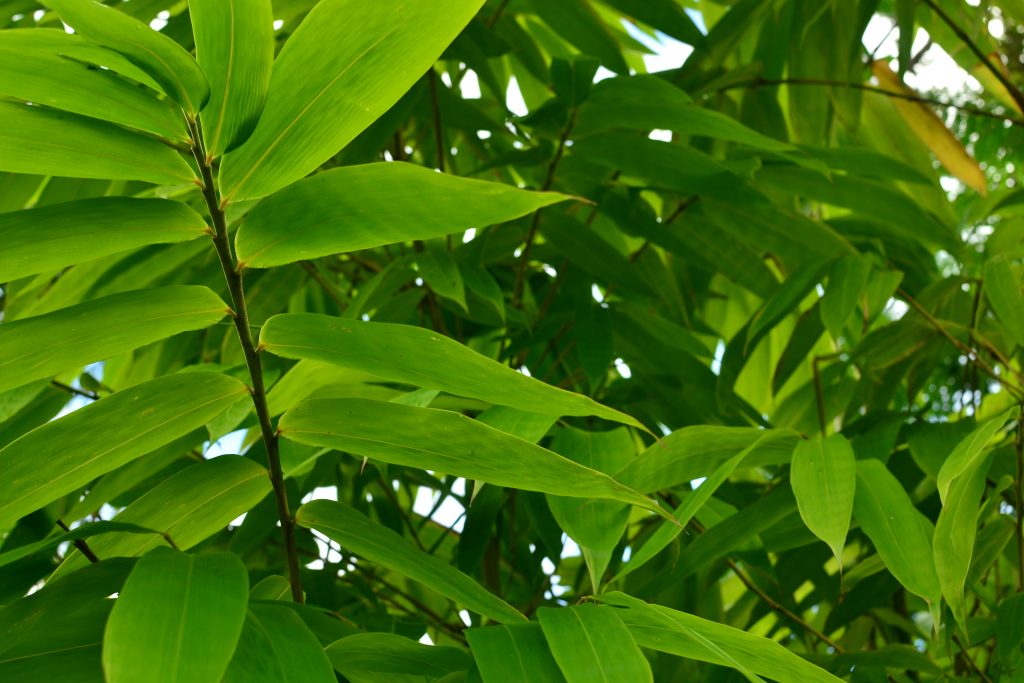
Happy Gardening!
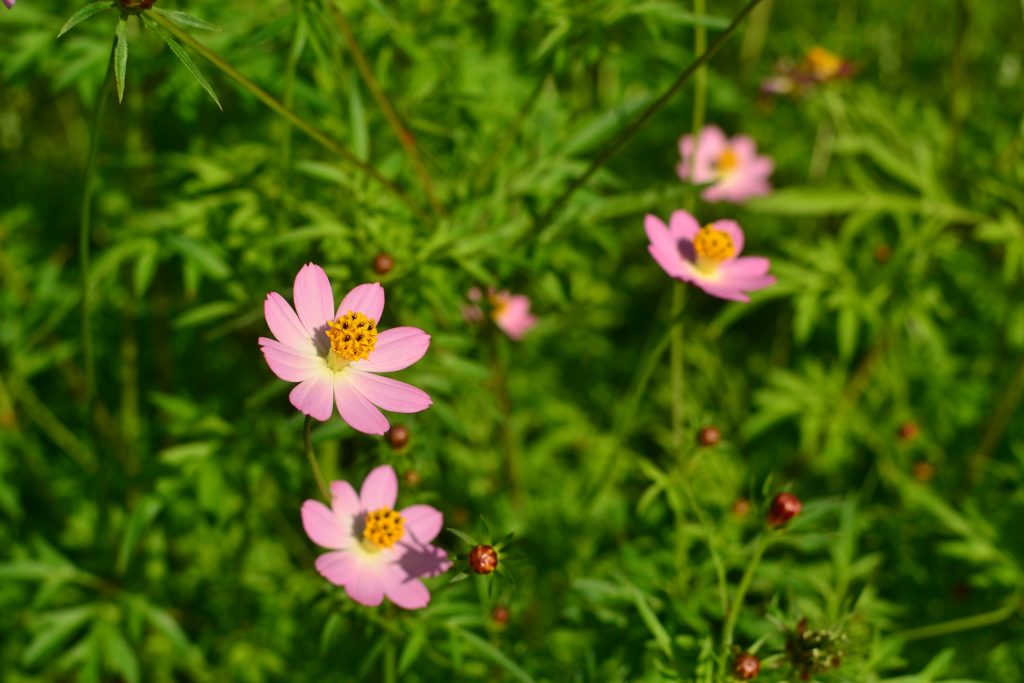
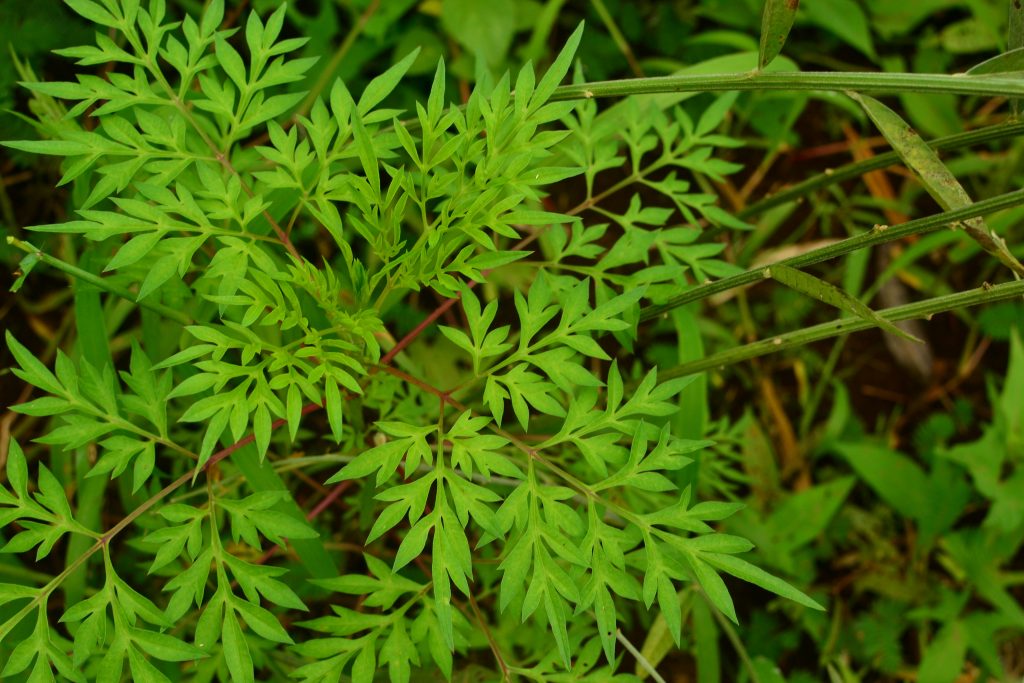
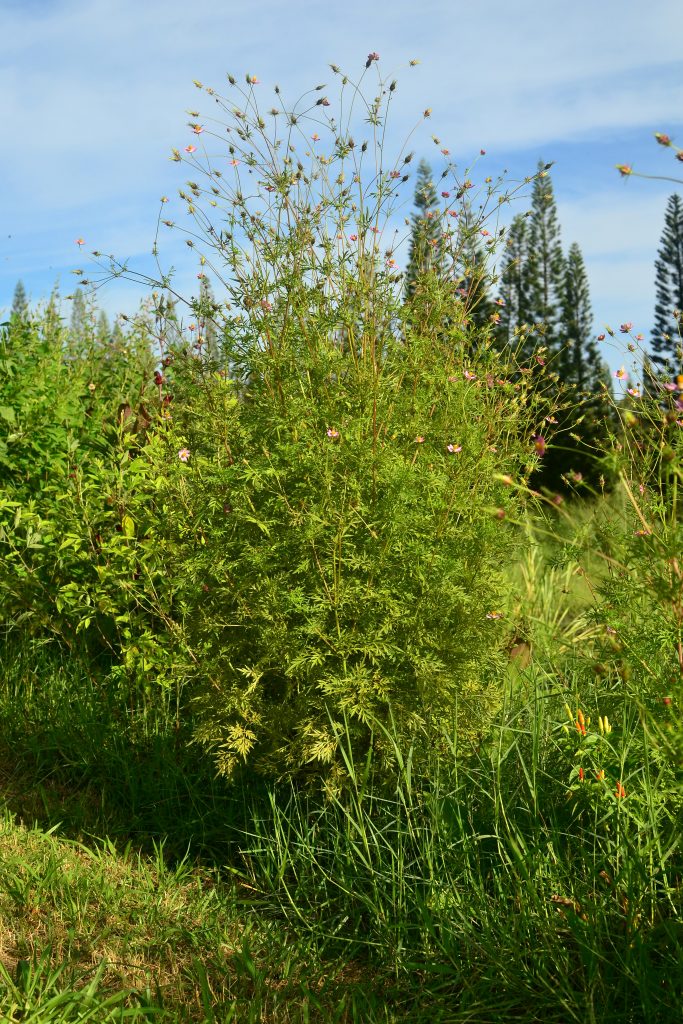 Propagation
Propagation